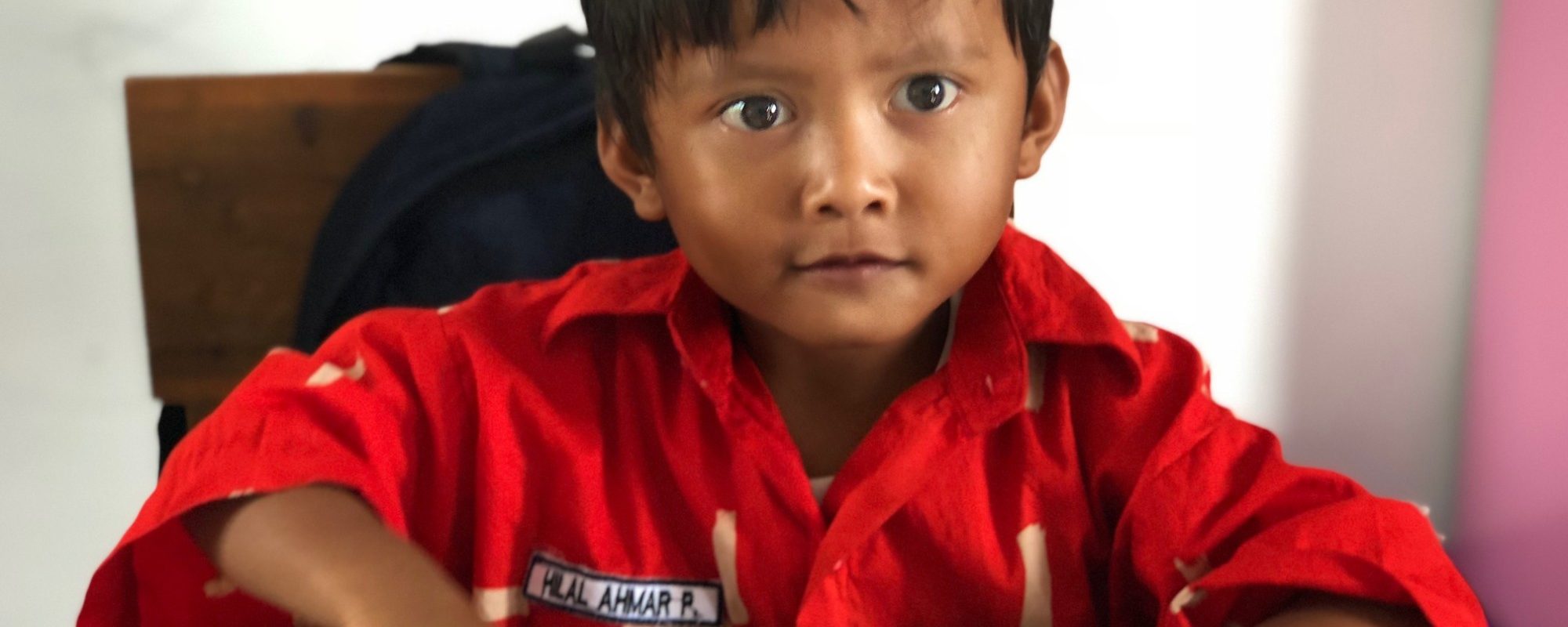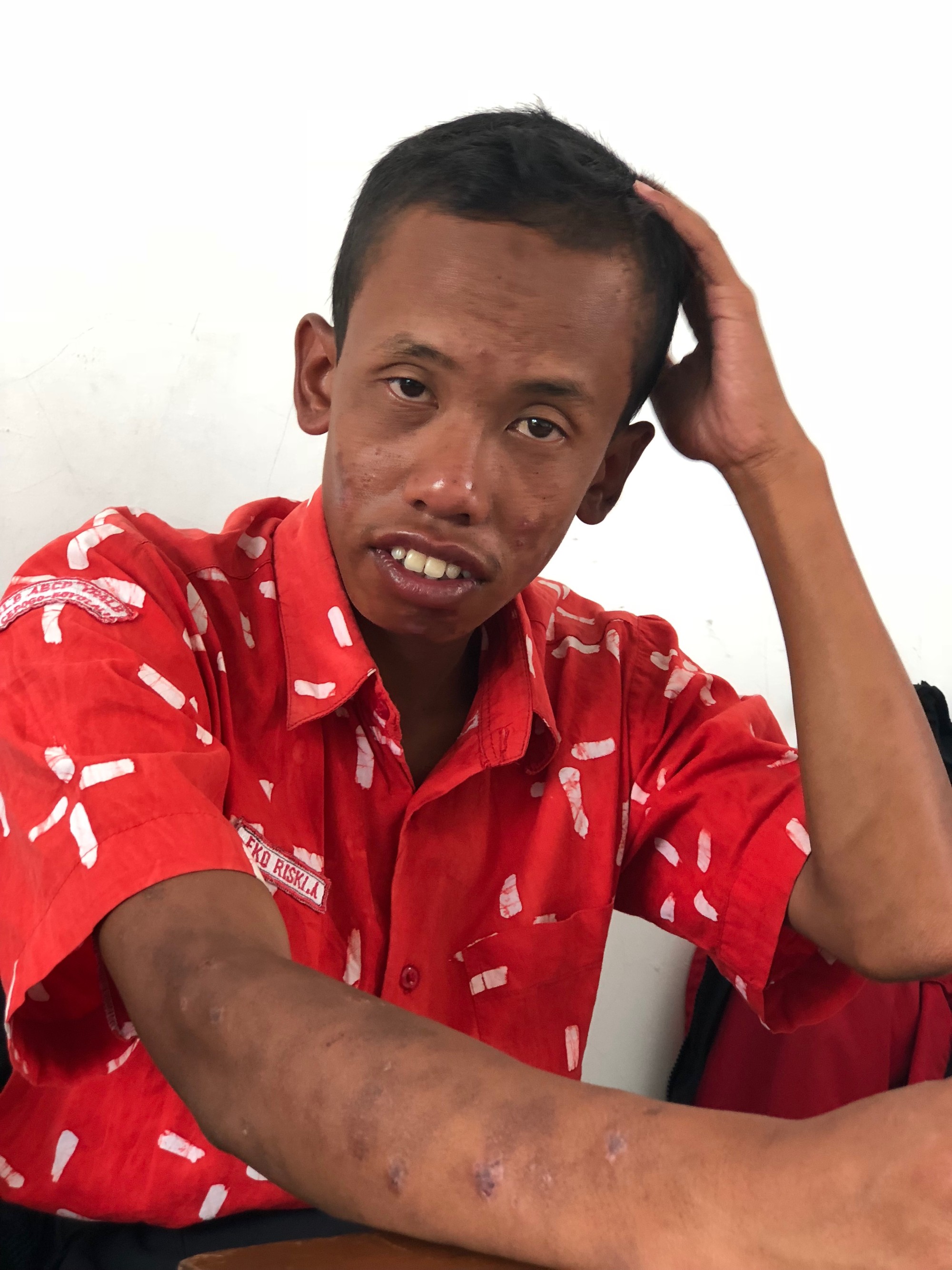CEPOGO, Indonesia — At the turn of the century, the number of special education schools in this country numbered between 76 and 83.[modern_footnote]Keadaan Sekolah, Siswa dan Guru Kelas, menurut jenjang Pendidikan Sekolah Luar Biasa Tunarungu Swasta (SLB-B). 2001.[/modern_footnote] Fewer than 10 percent of Indonesia’s school-aged tuna runggu (deaf), tuna netra (blind) and tuna grahita (special needs) children received a formal education, and no secondary schools existed for those who did.
As of the 2015-16 school year, there were only 19 high schools for students with special needs.[modern_footnote]http://publikasi.data.kemdikbud.go.id/uploadDir/isi_0D43285F-C0D4-4FD1-B723-54E8E0309A94_.pdf[/modern_footnote] But things are changing quickly here: Data from 2017 shows 74 such secondary schools, for a total of 2,070 special education schools attended by 121,244 students.
In Indonesian, these schools are called Sekolah Luar Biasa, which literally translates to schools that are either out of the ordinary, or extraordinary—or perhaps both. The recent ramp-up in their construction indicates both that Indonesia is increasingly ensuring that special needs students receive an education, and also that they are increasingly being excluded from regular classrooms.
To learn more about the needs of such students in Indonesia and how they are being met, I paid a visit to one of Indonesia’s longest-established extraordinary schools. It is situated on the slope of Mount Merapi, the fiery volcano in central Java that violently erupted in 2010.
For 28 years, teachers and parents in Cepogo, in central Java, have been teaching and learning with elementary, middle and high school students who have special educational needs at Yayasan Pendidikan Anak Luar Biasa (“YPALB;” literally, The Educational Foundation for Extraordinary Children).
At the school, I found dedicated teachers, extraordinary students and plenty of support for the contention that the people in these schools are not considered or understood by the writers of educational policy in this country.
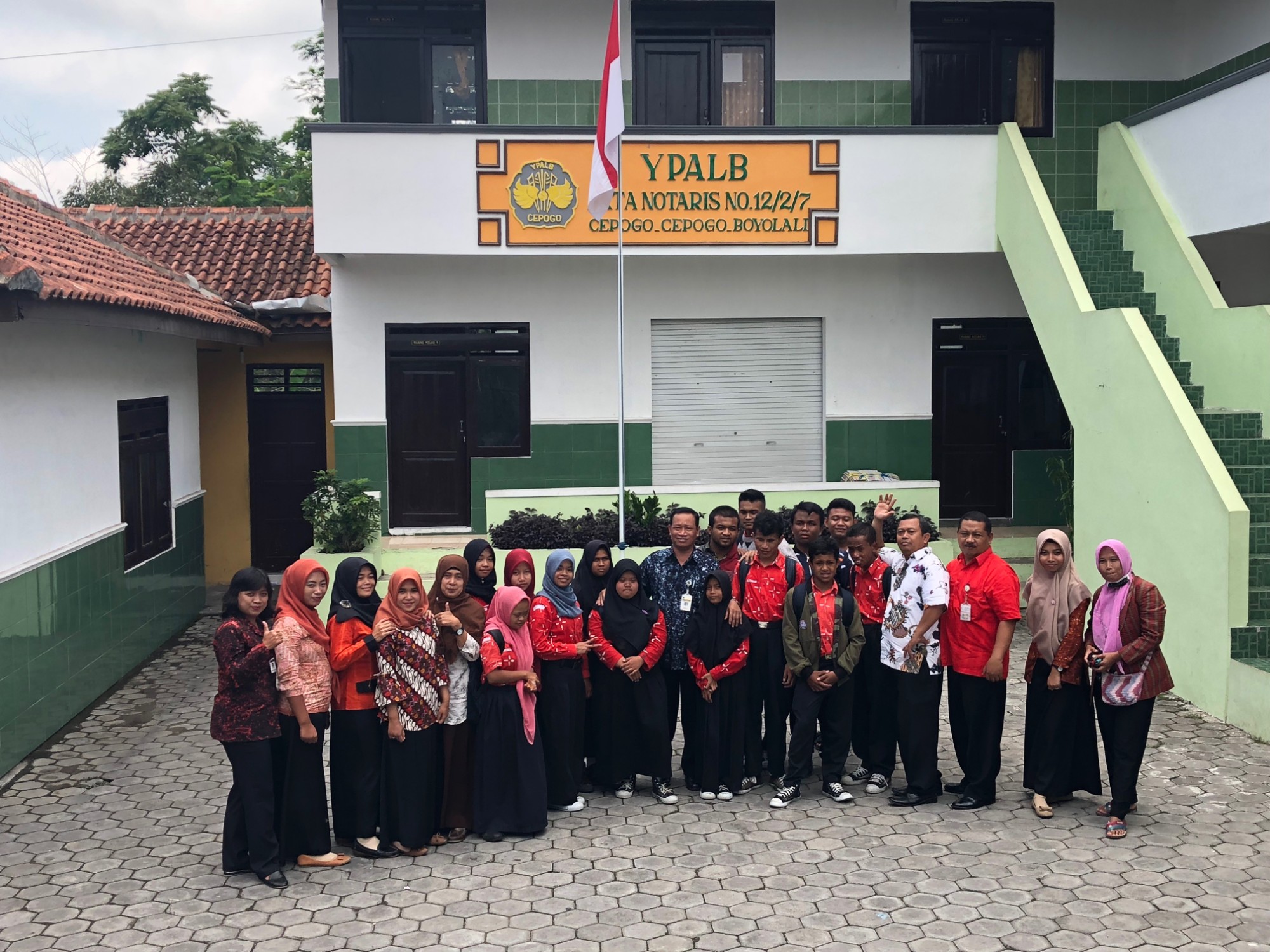
The school was founded by Tri Mulyo, Suryani,[modern_footnote]Like many Indonesians, this person has only one name. [/modern_footnote] and Sutasno.[modern_footnote]Like many Indonesians, this person has only one name. [/modern_footnote] All three continue to work at the school, and all three still teach.
There are 58 students currently enrolled at the school, of which 40 attend regularly.
Teaching deaf, blind and special needs students—sometimes all together at once—requires creativity, flexibility and patience. School leaders here openly encourage teachers to do whatever they can to meet the needs of students who are often ignored by the nation’s policymakers.
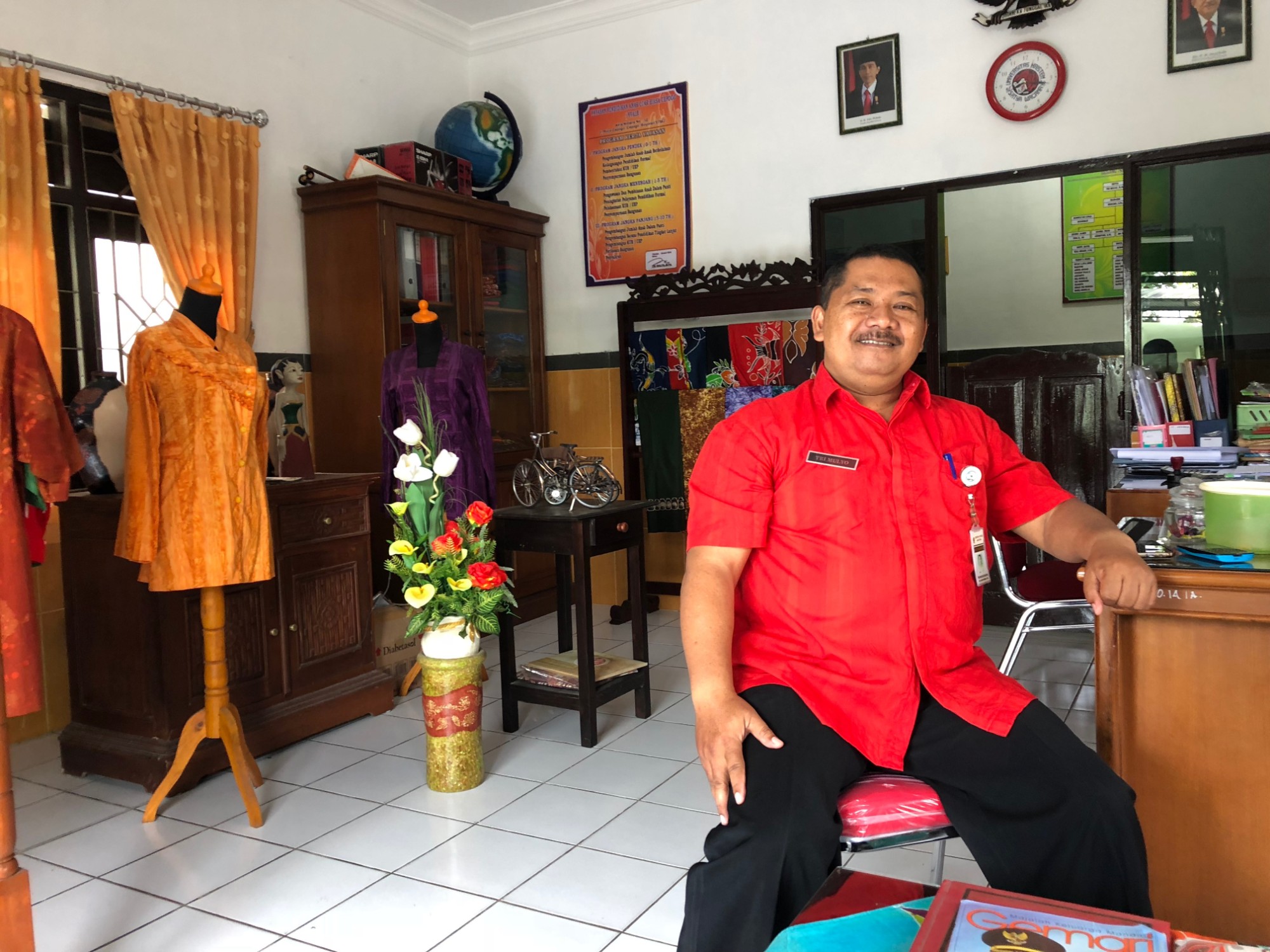
“We were forced to implement the national curriculum despite the fact that our resources are extremely limited,” says YPALB Cepogo founder and current superintendent Tri Mulyo.
Riza Isniani Masitoh regularly adapts her teaching style to communicate with the four deaf students in her elementary class, who are still learning their first language. Here, Riza asks her student Indah which crayons she might choose to color an apple.
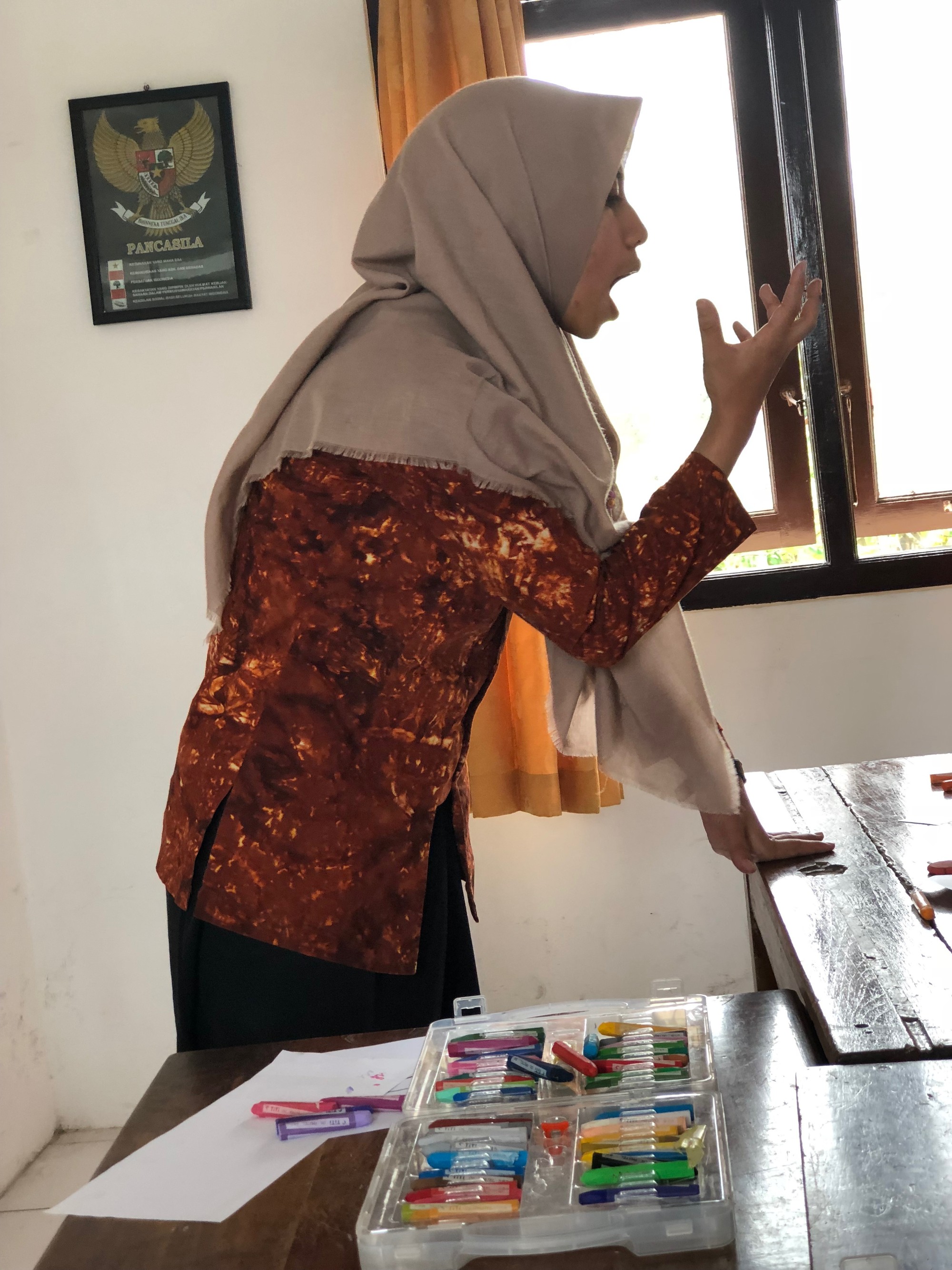
Nur Indah Sri Hastuti likes to color quickly and has an active imagination. When she has new ideas, she gets excited and signs rapidly. Fortunately, Riza is usually able to keep up and pushes Indah to continue learning, just as she does herself.
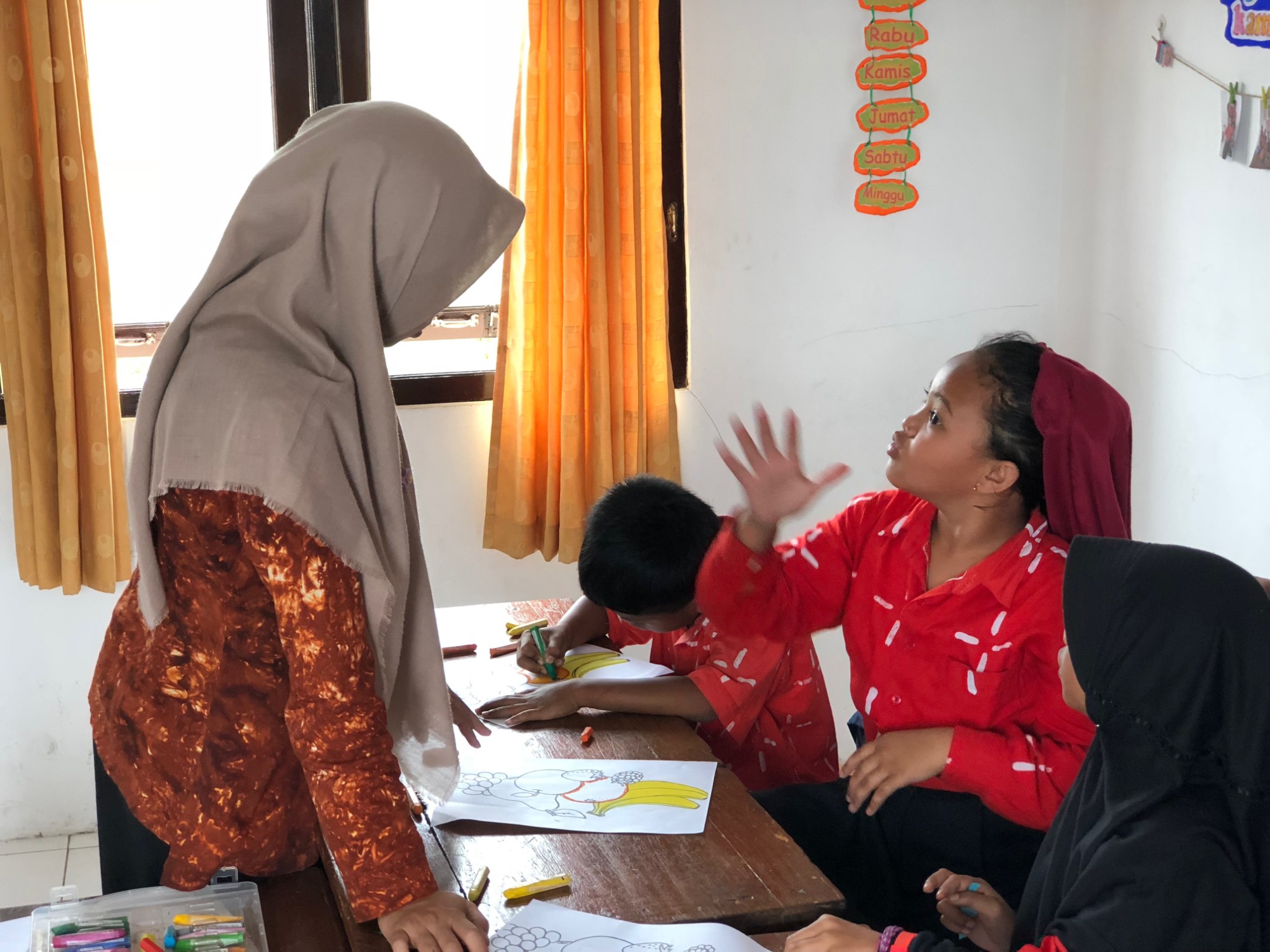
“I’ve been learning Indonesian sign language since 2009, right after I graduated high school,” Riza says.
Machfur Fahri Romadhoni is using two shades of yellow to color a banana, just as Riza instructed in class last month. Tactile activities offer additional avenues for learning for students like Fahri, who, like his father, is congenitally deaf.
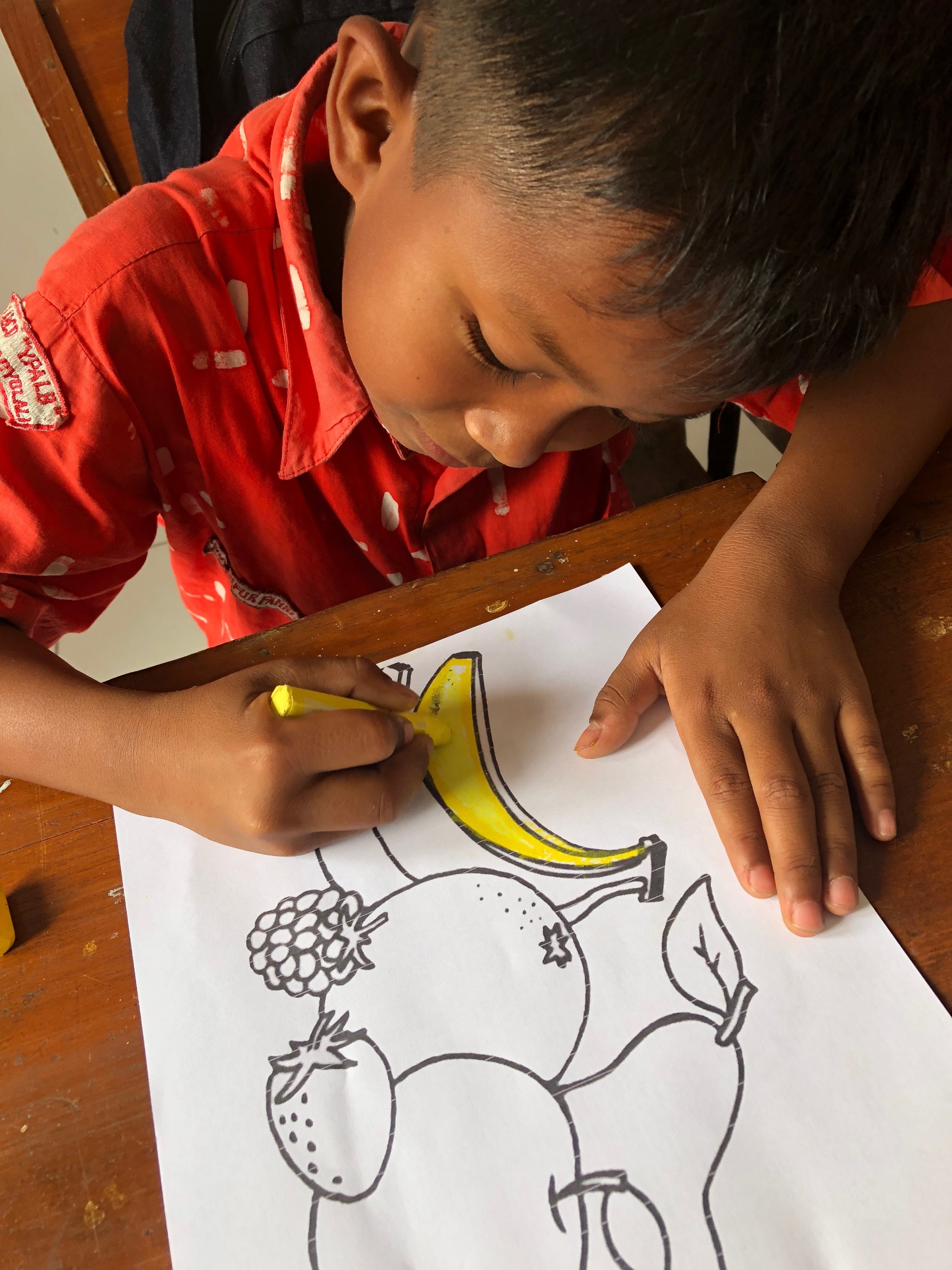
Coloring between the lines requires extra concentration.
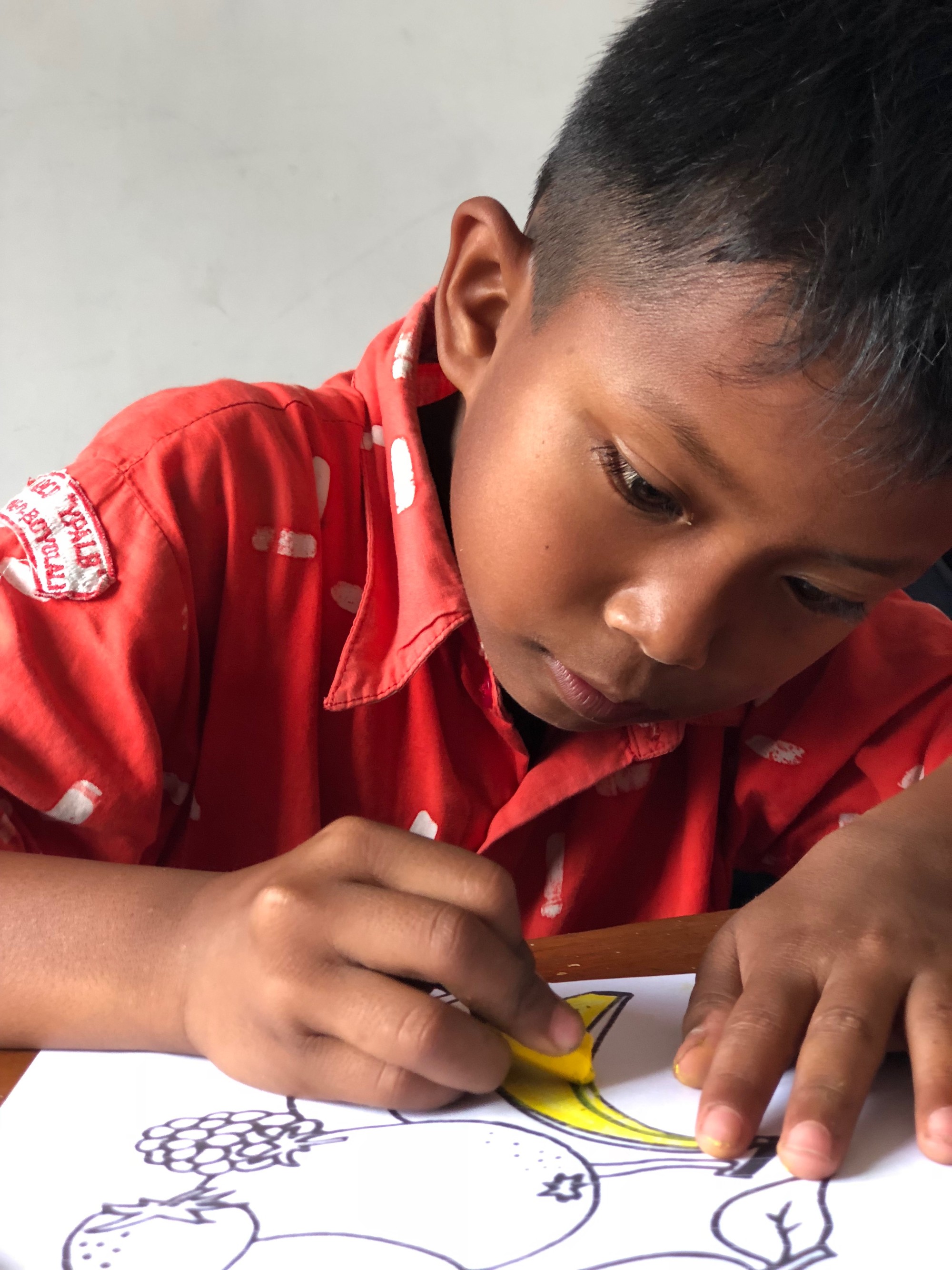
Erna Nurul Lestari started coming to Riza’s room relatively recently. She was previously placed in a class for slow learners, but her YPALB teachers deduced that Nurul was learning slowly only because no one in her home uses sign language. Now part of a community of signers, she is quickly catching up with her classmates.
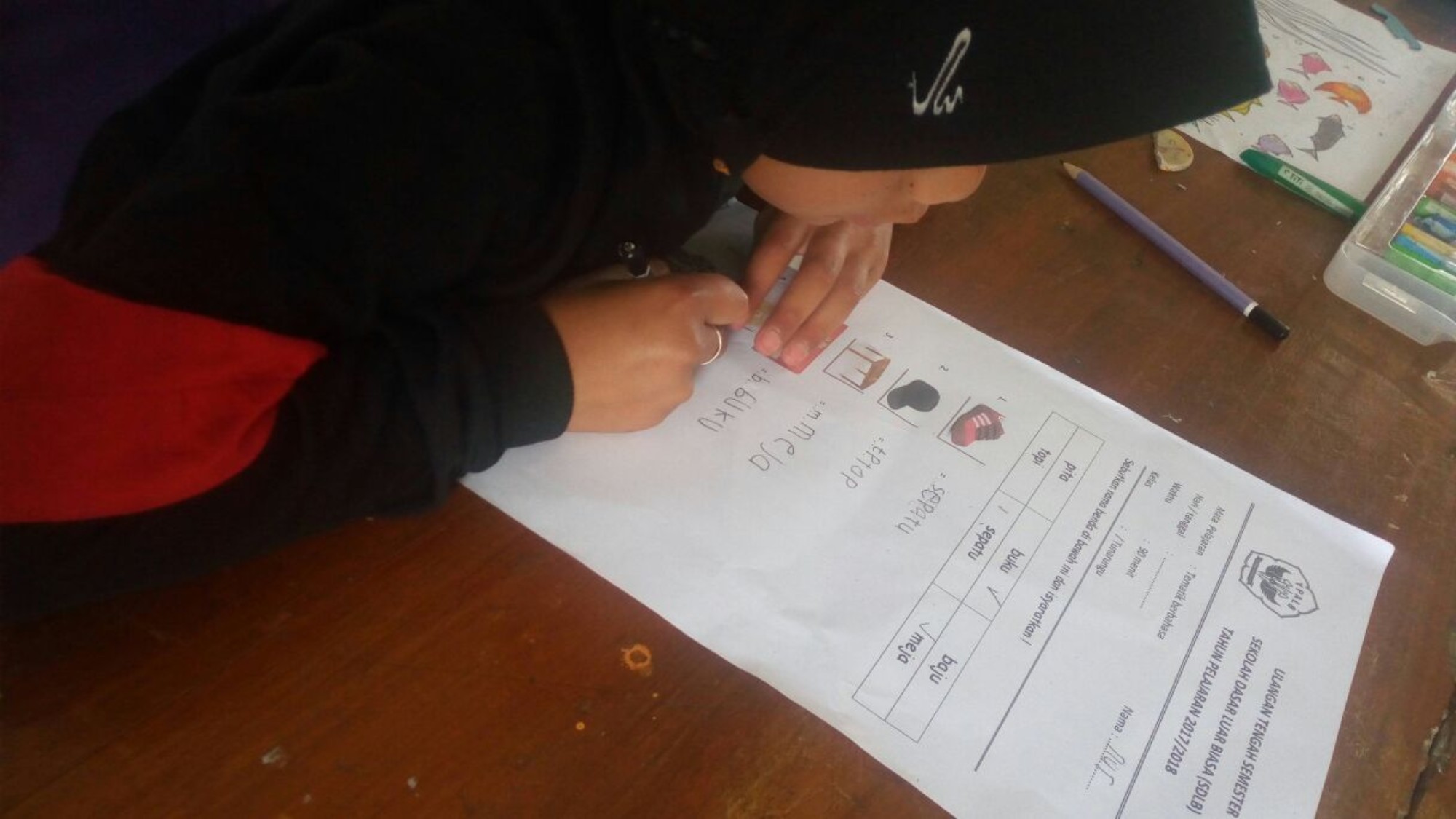
Nurul practices the two-color trick.
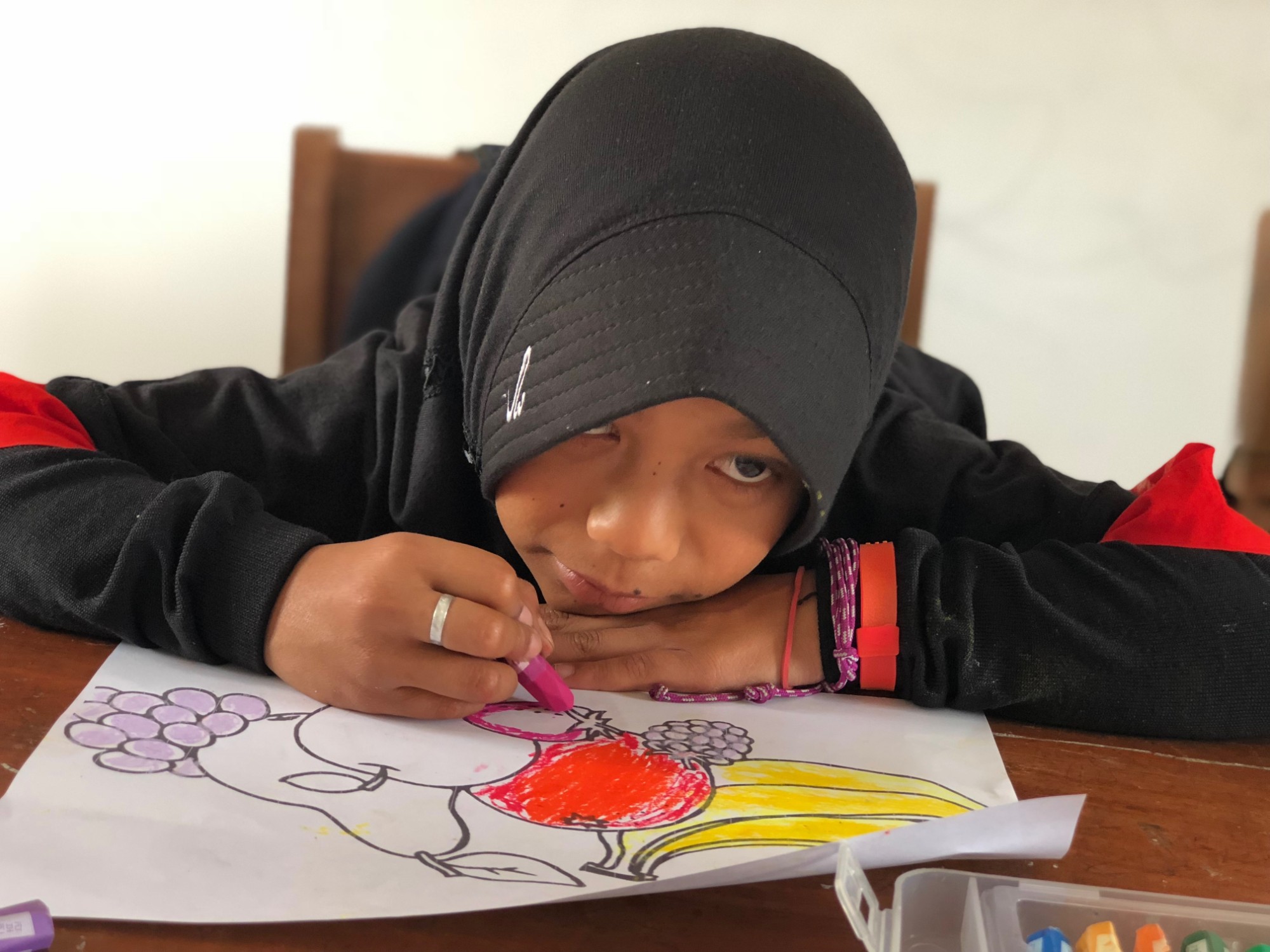
The youngest student in Riza’s class, Hilal Ahmar Prabowo, is not yet officially enrolled at the school because he is still only four years old.
Below, he sits for a mock version of the same test Nurul is taking (above). For the midterm examination, deaf students had to match six words from a word bank, selected from a semester of new vocabulary, with their corresponding images. After they wrote out all the words, they sat with their teacher and signed all six nouns: shoe, hat, table, book, ribbon and shirt.
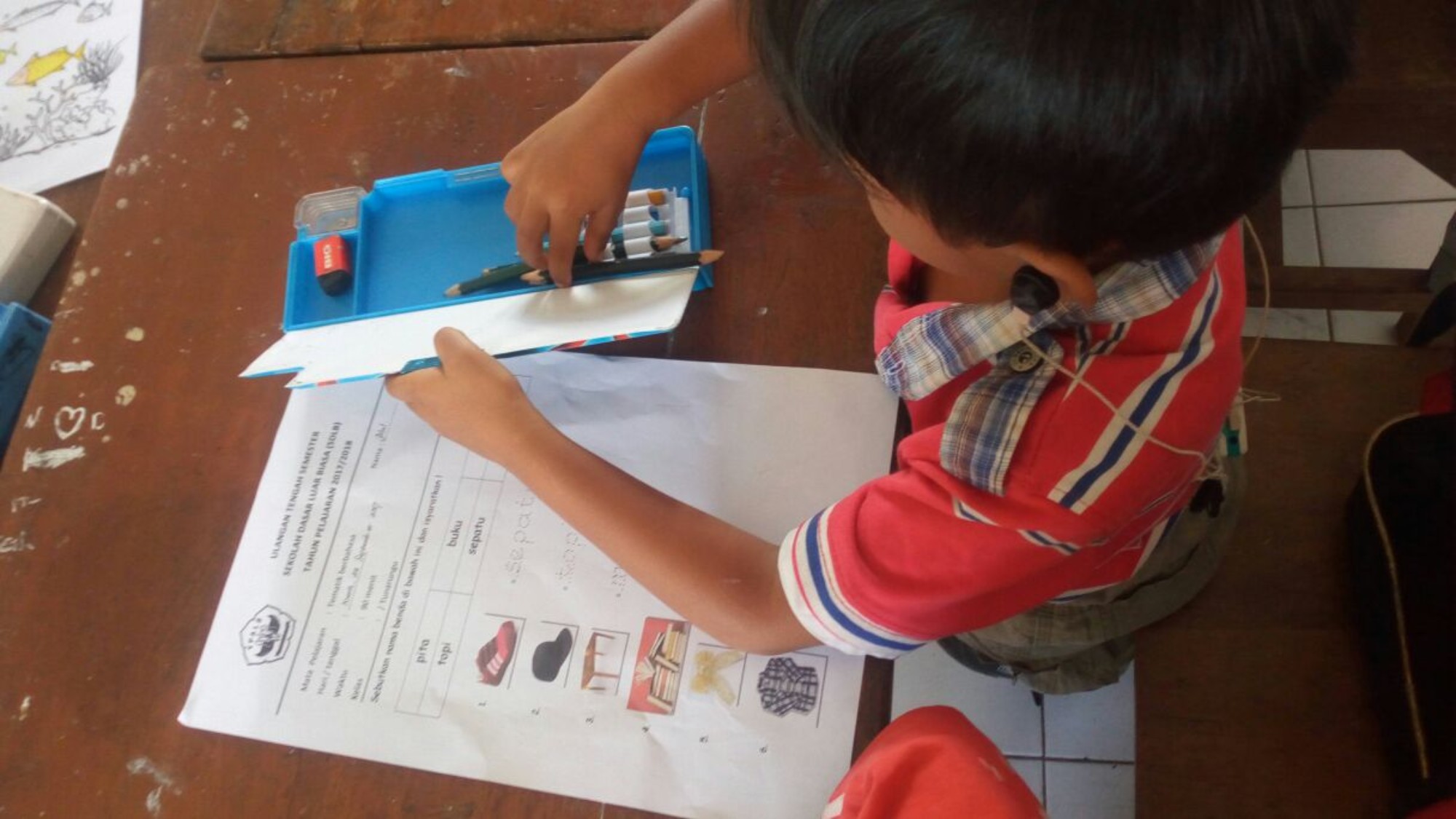
Some modifications were made for Hilal: the words were half-written in polka dots so he could trace them, and a recording of the words played over headphones. It isn’t clear whether Hilal is completely deaf or just low-hearing and strong-willed. On the presumption that he can hear, even if only in a limited capacity, his teachers provide as much assistance as the school can afford.
Hilal’s mother, Lestari,3 is a hearing person, but once she realized her son is not, she requested permission to enroll him in YPALB so he could enter the world of language as quickly as possible. She also enrolled, in a sense: Lestari assists Riza in teaching Hilal’s class and also occasionally attends the high school class to further develop her own sign language. Lestari became a teacher and a student for her son.
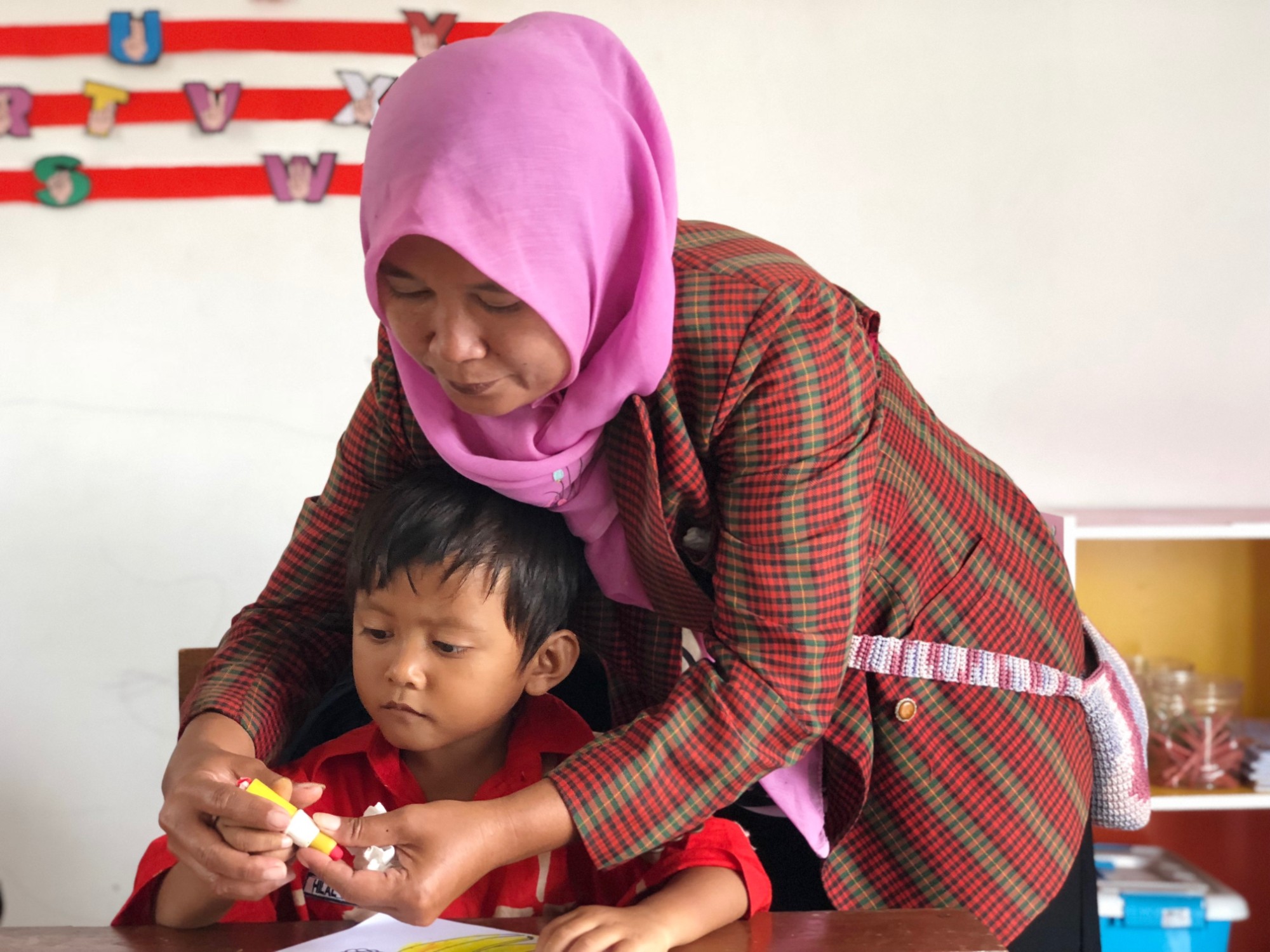
Hilal hasn’t mastered the two-color trick, but is getting better at coloring on paper instead of the classroom’s walls.
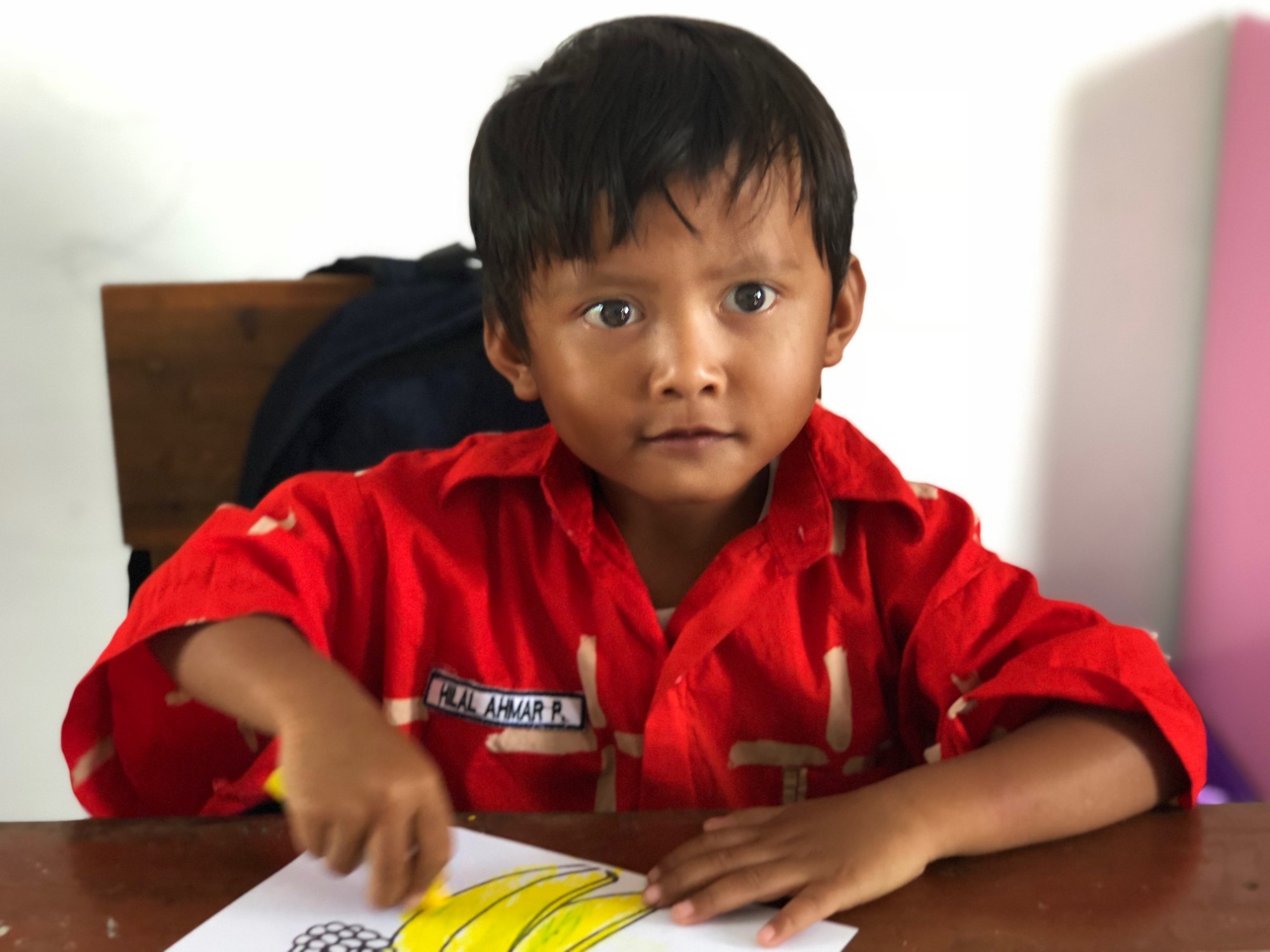
There are no grades at the Educational Foundation for Extraordinary Children in Cepogo. All deaf elementary students learn together with Riza for grades 1-6, after which they attend middle school class with Suryani, one of the school’s founders who still works as a full-time teacher. Deaf students eventually advance to the high school class for their last three years at the school.
By middle school, the focus on vocabulary and sign language has shifted to disciplinary knowledge, including mathematics. Suryani (below, back right) currently teaches five deaf students and one with special educational needs.
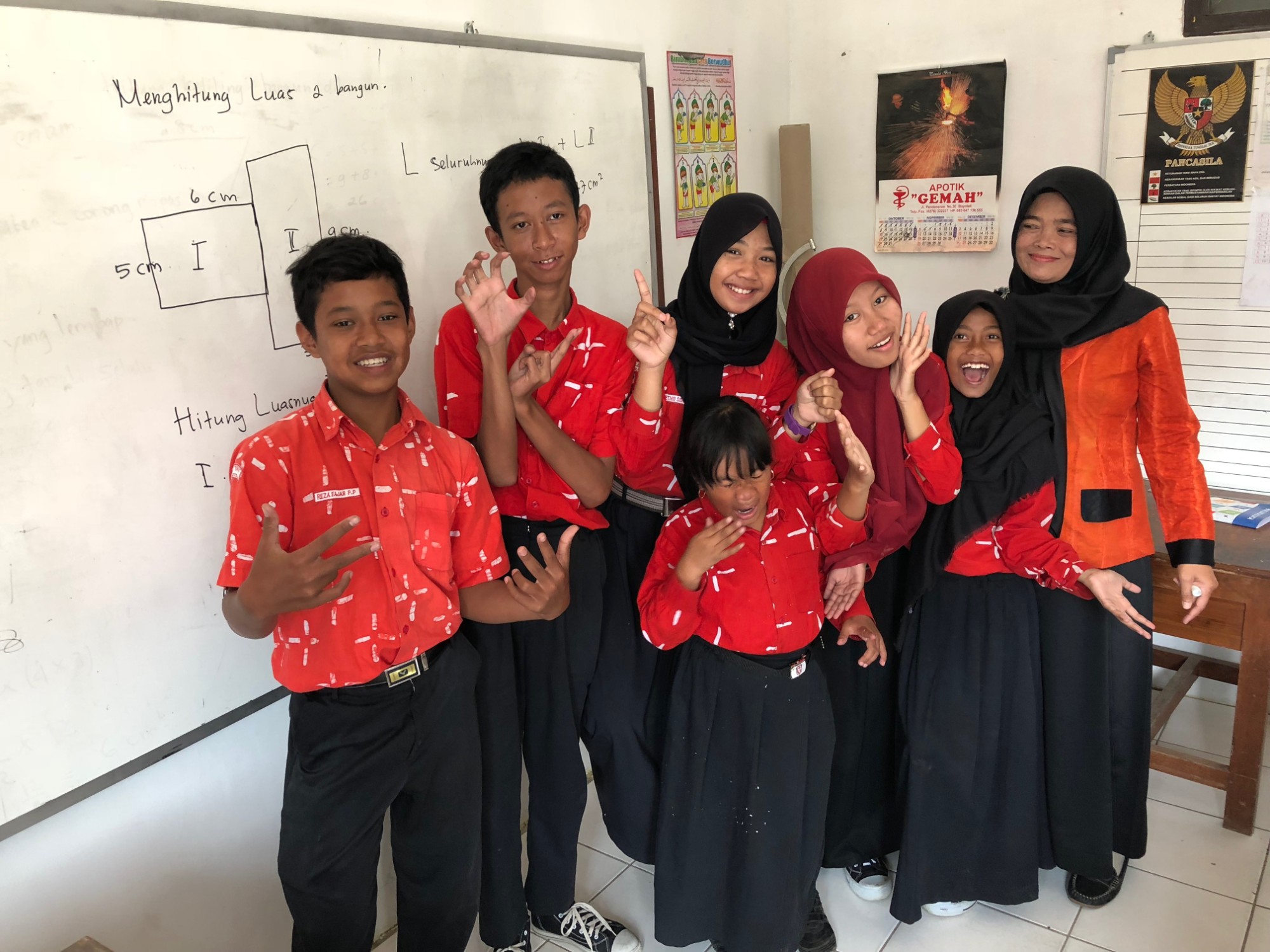
Below, Suryani points out an error Rizal Arya Ardiansyah made in calculating the area of a square as her students Retno and Rizka discuss the difference between area and perimeter, Reza computes and Intan looks on.
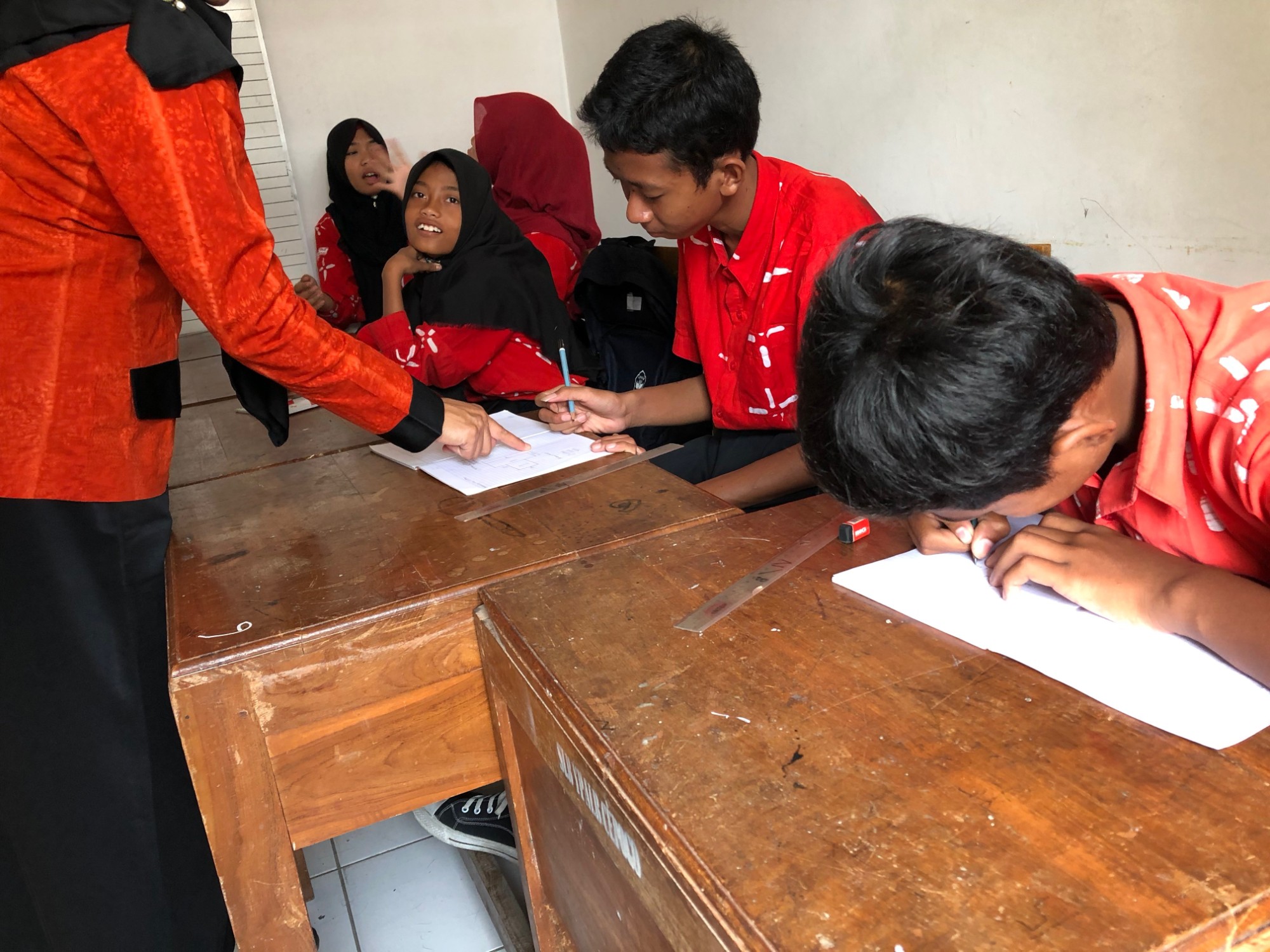
Reza Fajar Pamungkas displays his answers for the areas of figures I and II. When I drew new squares, one L-shaped, at the bottom of the page, he quickly found their areas. After class, he invited me and the high school students to join him for his favorite activity: soccer in the school courtyard.
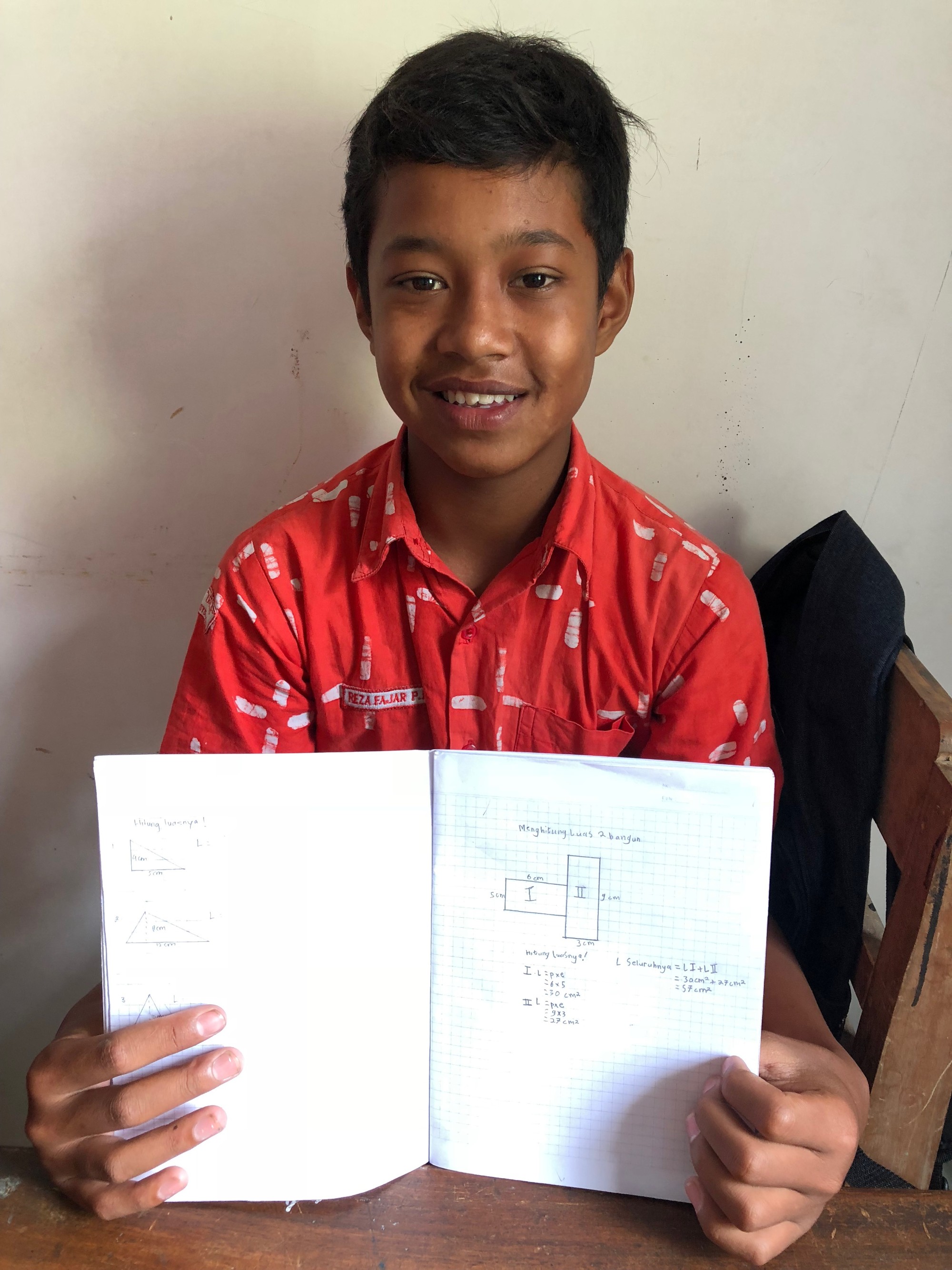
There are no blind students at the elementary level. The middle school class has only two: Rizki Abdul Mu’id and Wahyu Cholil Ikhsan. They are co-enrolled in a class with a boy with special needs who is also named Rizki. Like many middle school boys, they are constantly making funny voices and sounds to get their friends and teachers to laugh.
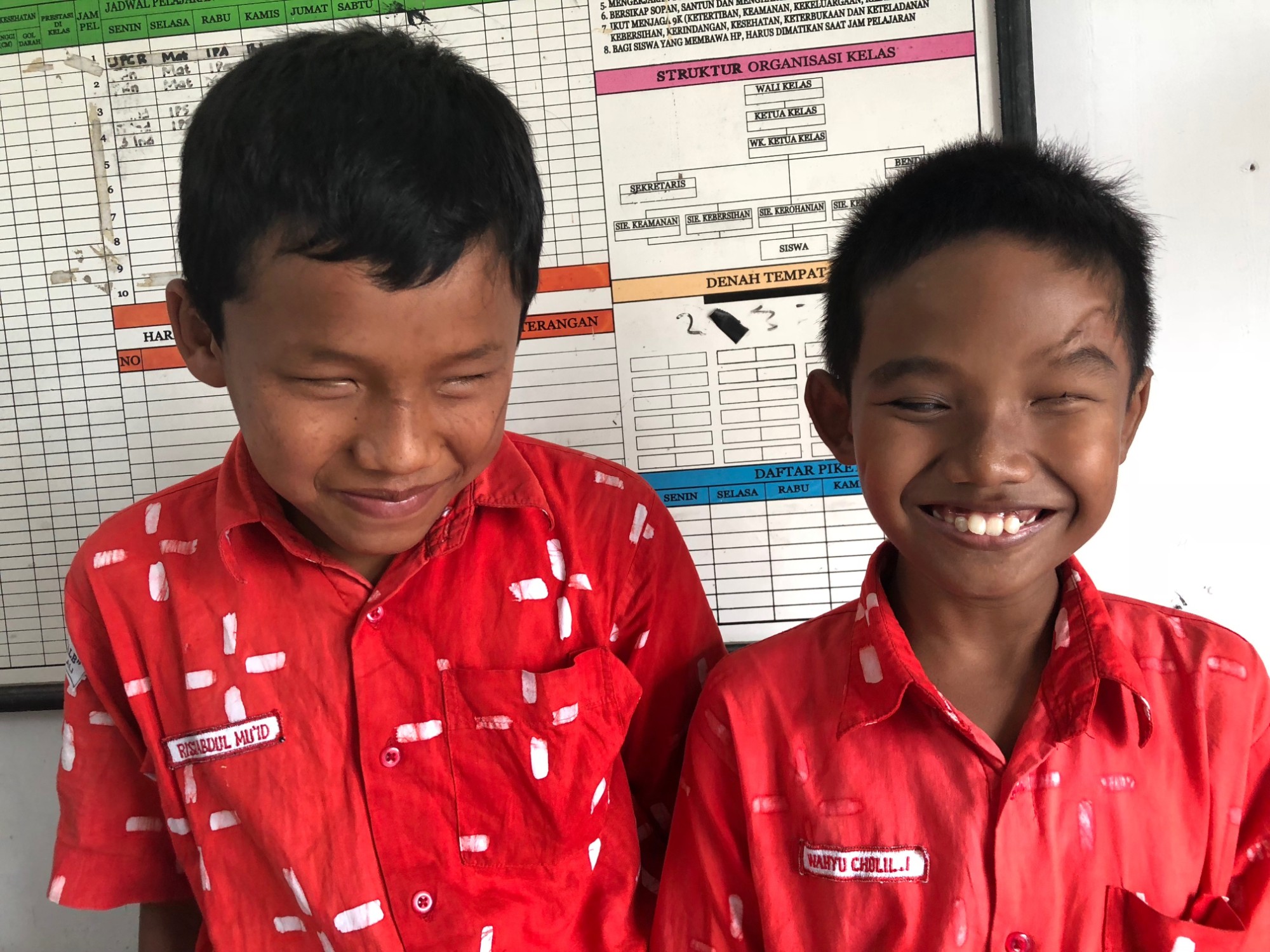
Rizki and Wahyu have very different personalities, probably influenced by the way they lost their vision. Wahyu, whose head often hangs low when he speaks, is presumed to have been blind since infancy as a result of a failed operation. No one can confirm that, however, because no one knows who his real parents are or what happened during the first two years of his life. A family that had no son found him on its doorstep and took him in as its own. Having no memory of that history or of being a seeing person, Wahyu is not concerned with what could have been and focuses instead on what is.
Wahyu’s effervescent positivity makes him a perfect pal for Rizki, who is more reserved and sometimes even a bit depressive. When he first came to the school, he could see with the assistance of thick coke-bottle glasses. For reasons not completely understood, his vision has continually diminished to the point that he now has “low vision,” meaning he sees only patches of light and darkness. Rizki remembers the world of sight clearly, however, and has been slow to accept that he must move to the worlds of touch, taste, scent and sound.
On my second visit to the boys’ classroom, they had just finished class and were drumming a beat on their desks. When their teachers announced my arrival, Wahyu immediately stood up and put out his hand to greet me. I touched the back of my hand to the back of his, and he shook it, saying, “Welcome to our class. Here, let’s sing a song!”
And so we did. Wahyu and Rizki led us in a touching rendition of “Indonesia Raya,” the country’s national anthem, which heavily emphasizes overcoming differences and realizing the country’s motto: Bhinneka Tunggal Ika (Unity in Diversity).
At the 35-45 second mark of the video above, Wahyu’s voice almost seems to vacillate between pride and sarcasm, at which point his teacher admonishes him to “Sign it correctly!” I found myself simultaneously laughing and wondering whether Wahyu is already aware of just how divisive difference is.
The expression of pride in the nation of Indonesia sounds almost ironic when uttered by the country’s own different children, whether they vary by ability, race, social class, place of origin or otherwise.
I headed to the school canteen, operated that day by Retno Soniyah, a deaf seventh grader. Below, she is selling a snack to Ahmad Abdul Zaqi (center, attempting to feed Intan), an autistic student who was left with his grandmother after his parents divorced and his mother remarried.
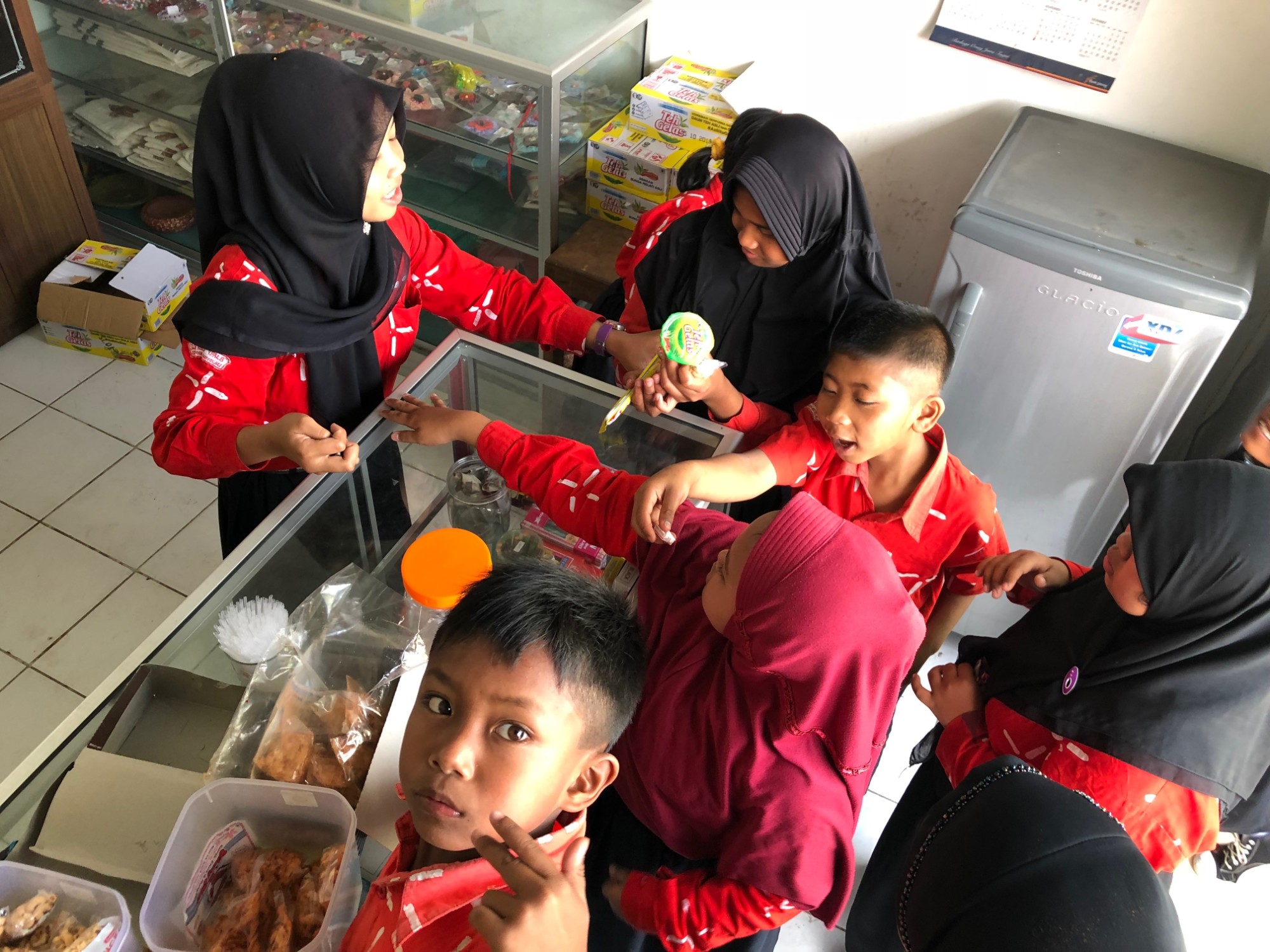
The canteen is one of many ways YPALB staff members encourage students to socialize and identify their interests, passions and abilities. By granting students ownership and opportunities to role-play real-world activities, the YPALB community encourages them to teach and learn from one another and, for some of them, gain skills that could lead to employment after they graduate, and to practice their social skills which, insya Allah (if God is willing), might help them to find lasting love someday.
The platonic relationships students form here do sometimes become romantic after graduation. The school’s alumni network includes several married couples. The friend networks built here constitute a significant proportion of the people many students know, and the bonds built here often last forever.
In the photo below, Nurul makes a funny face with Didik Kurniawan,[modern_footnote]Like many Indonesians, this person has only one name.[/modern_footnote] whom she befriended in the class for students with special needs. Didik’s mom smiles in the background.
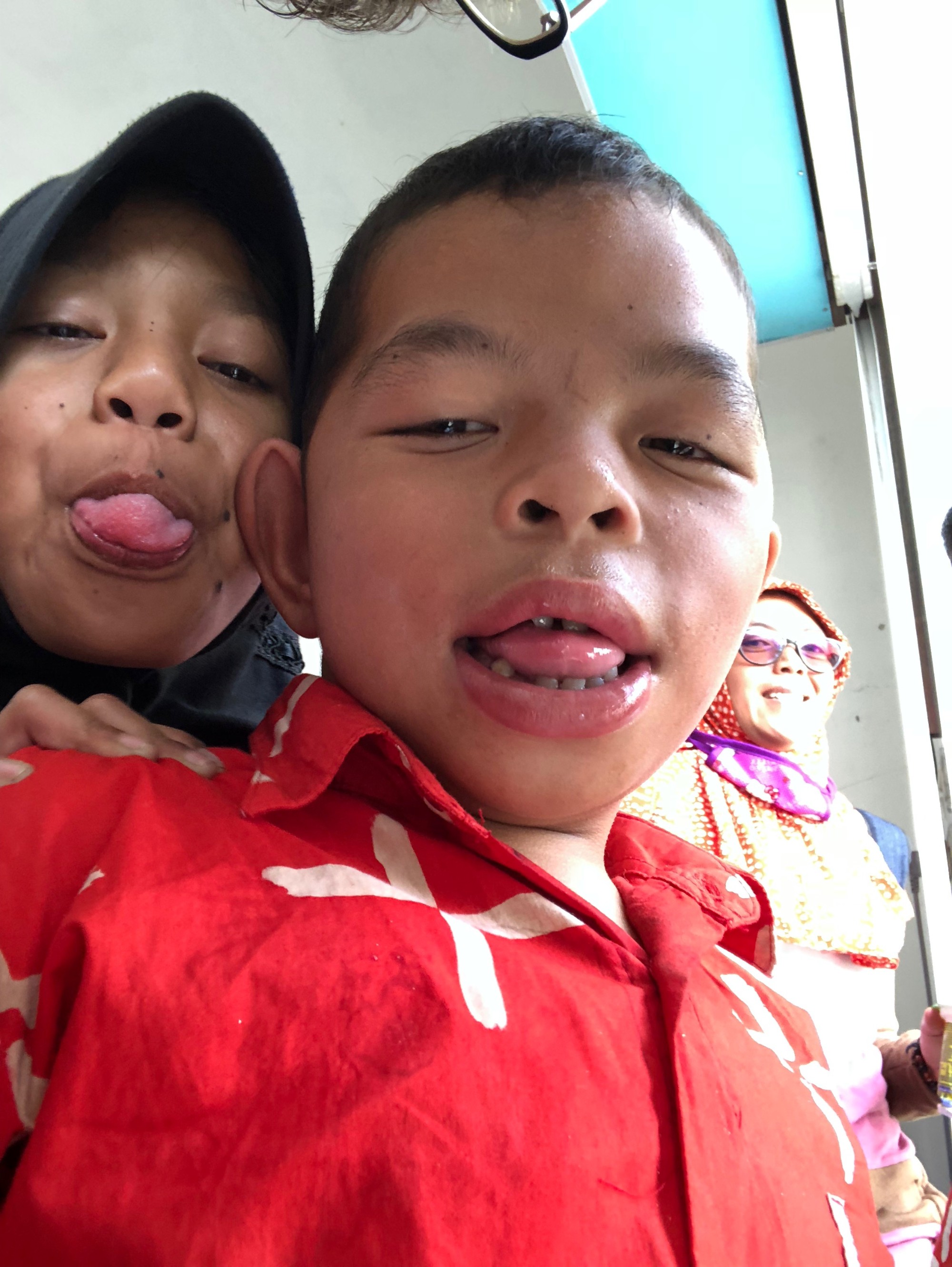
Nila Ayu Wijayanti, a student with special education needs, is currently in third grade.
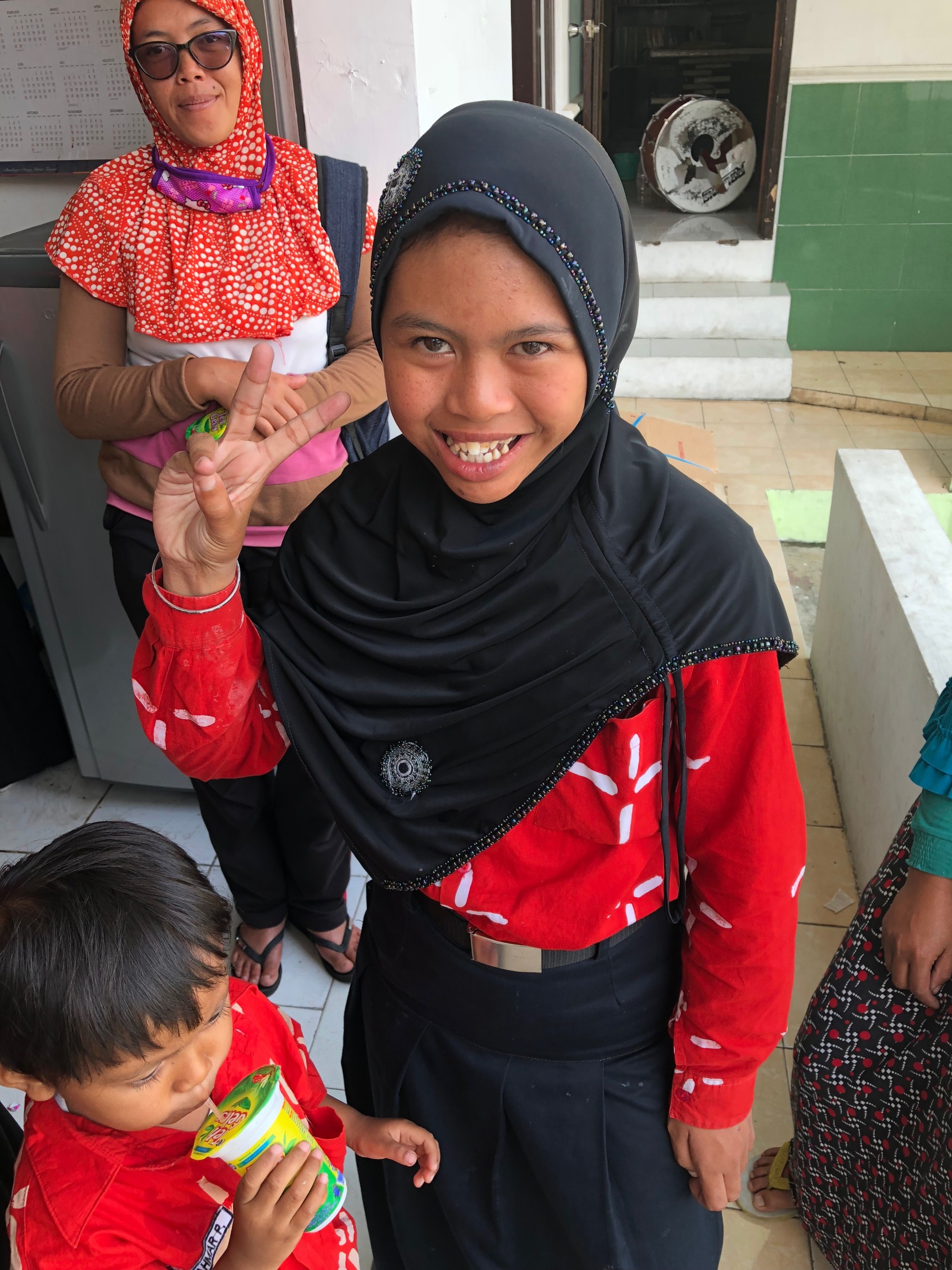
Like many of the students who have special educational needs, Nila was born and raised in the nearby village of Dusun Tumang, a handicraft center that specializes in copperworks for export as well as the processing and remarketing of second-hand goods. There is no evidence that the metals being processed and chemicals used in Dusun Tumang are responsible for the high rates of autism among children there, but YPALB teachers suspect such environmental factors may be a factor.
Eko Riski Aditya, above, is one of three high school boys with special educational needs. His needs were probably not caused by environmental factors because his father is also on the autism spectrum. By high school, it can be tough for students like Eko to keep up, as subject matters must track an undifferentiated national curriculum, and the school can’t afford to hold separate classes for blind students, deaf students and those with special needs.
Like high school students anywhere, many of the those at YPALB have become more aware of the politics and policies affecting their education by the time they enter their final years here. Not all of them can maintain the hope that more education will provide the best possible life for them.
Students like Rudi Listyawan sense an ignorance or indifference to their plight on the part of educational policymakers, and take active steps to help themselves. During his first year of high school, Rudi dropped out and took a job as a dishwasher at a restaurant in Boyolali, a town 20 minutes from the school. The owner has trained all of his staff to interact with Rudi and other deaf employees in sign language, and Rudi is dedicated to this job.
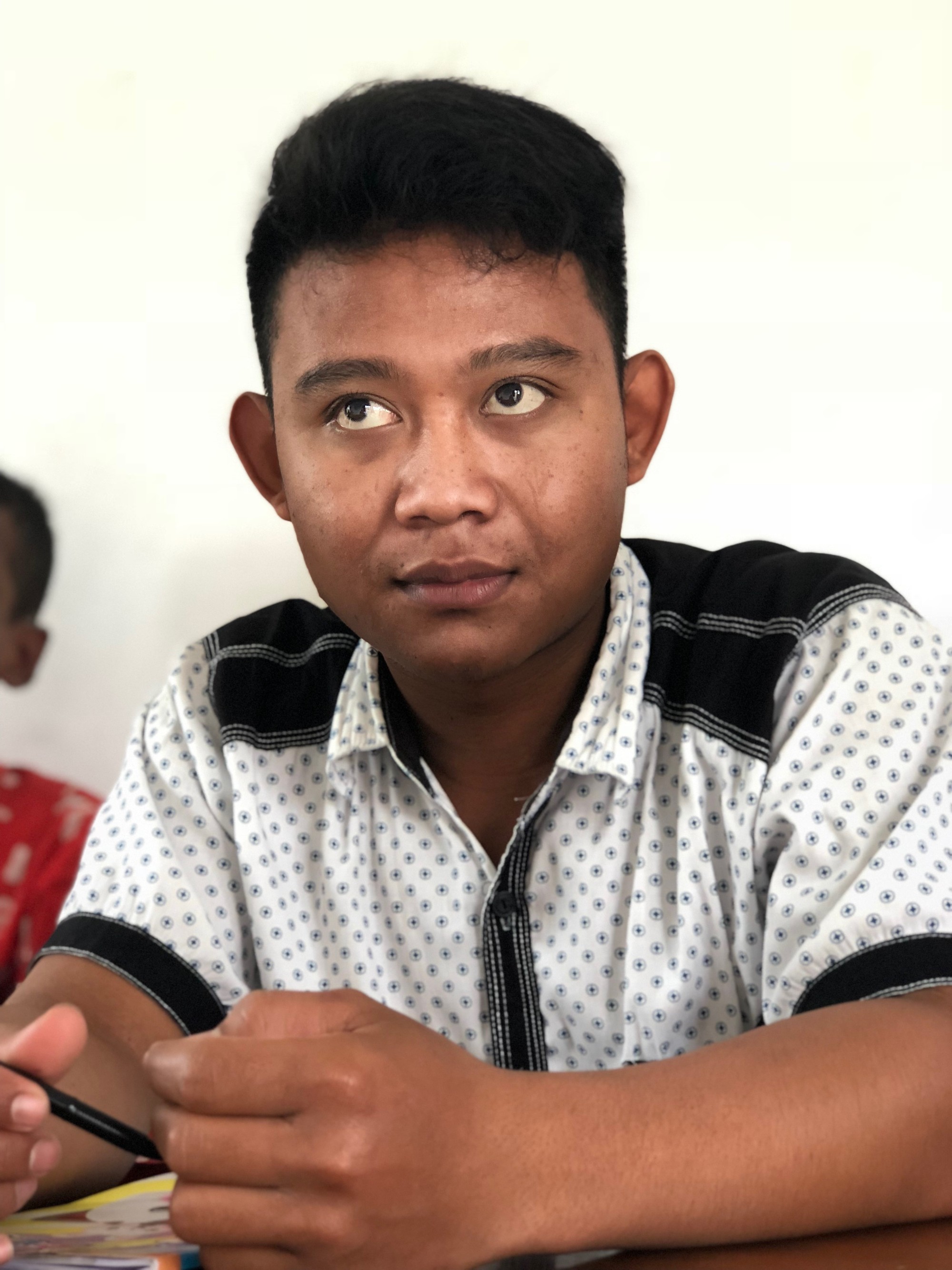
However, at the suggestion of Riza and his other former teachers, and with permission from his boss, Rudi has recently started attending school again so he can prepare to take the national examination. A passing grade might not open many new employment doors, but it would render him a high school graduate. As his teachers have repeatedly reminded him, the point of learning is not just to get a job.
But since his return, his attendance has been intermittent, he says, because his school uniform is not yet ready—indeed, in the photo above, he is out of uniform. Riza tracked him down at his restaurant later that day and his boss covered his shift so Rudi could chat with her about returning to school.
In the video above, Riza apologizes that his uniform is not yet ready. Rudi’s signs and smile make apparent that although he is being polite, he still feels unsure about coming back to school. He is confident he will pass the test even without preparing.
Sri Wahyuni demonstrates an equally calm but qualitatively different sort of confidence. Whereas Rudi aspires to start working as soon as he graduates, Wahyuni, the only other deaf high school student, would like to attend college.
That puts her at odds with school administrators like Sutasno, who support her but not this particular dream. “We believe students should focus on developing skills they can use to build a stable income and to gain as much safety and independence as possible,” he says. He won’t deter Wahyuni from applying to college, but makes clear that the school has no extra resources to help her navigate the process.
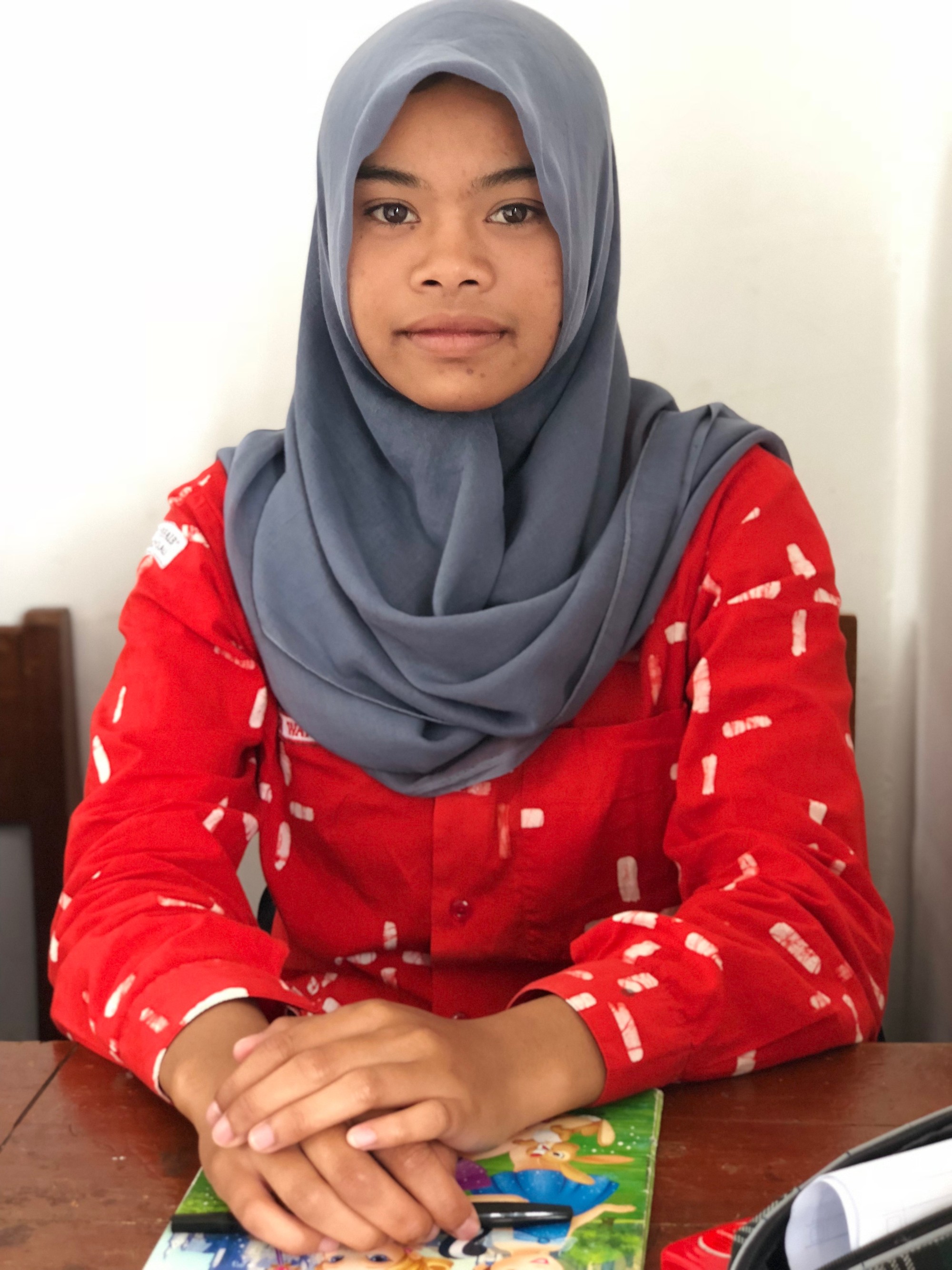
As one of three students who live in the small boarding house attached to the school, Wahyuni doesn’t have many other options to turn to for support. She hopes to study deaf education.
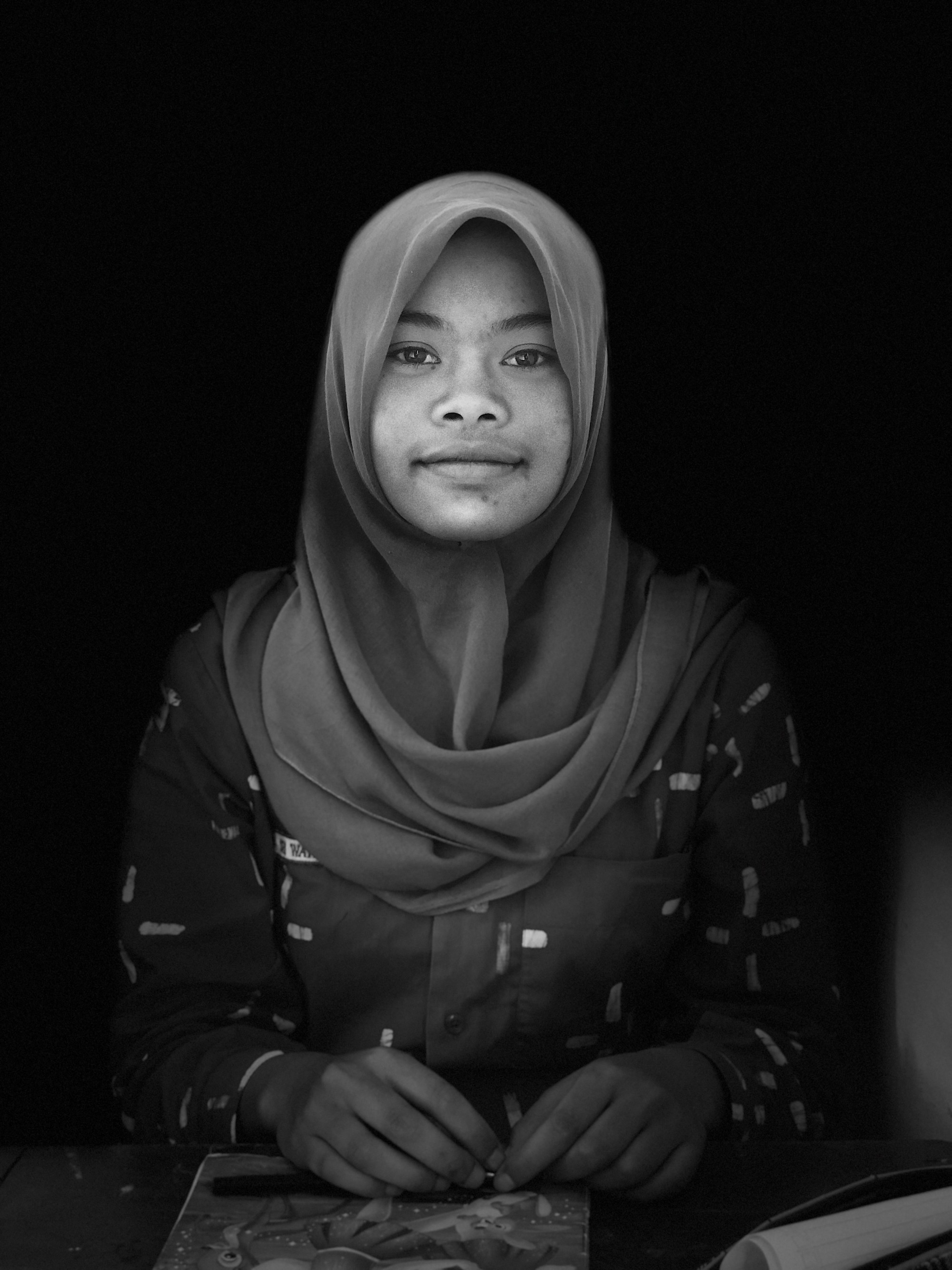
Perhaps, like Wahyu, Wahyuni’s understanding of the difficulties of being different led her to politely opt out of signing the national anthem with her teacher, Purnomo Jati. A patient man, in the video below, he simultaneously sings and signs the end of the national anthem with support from his other students.
Purnomo taught in Jakarta for some time before coming to Cepogo. Fluent in sign language with experience teaching deaf and special needs students, he is a valuable member of the YPALB community. A gregarious teacher who has no problems befriending his students, he has brought knowledge, perspective and hope to students like Wahyuni and Puput Puji Atmojo.
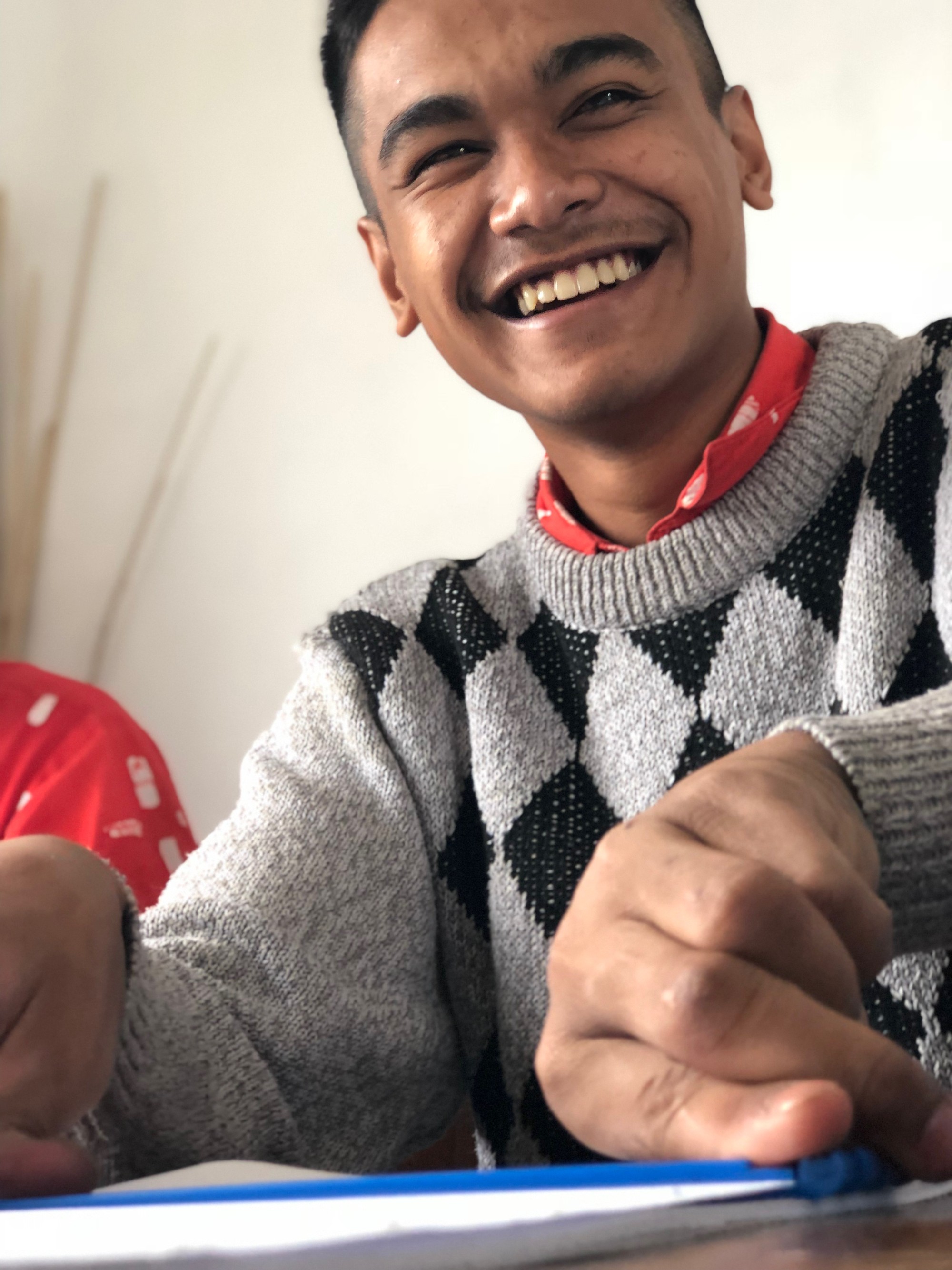
Under Purnomo’s tutelage, Puput has learned to use his riglet and stylus, which enables him to write the braille he learned to read in middle school. That means he can now take notes on more advanced material. In the video below, Puput scribbles down some information about journalism.
Puput’s story is much like that of Rizki, the middle school student. For years, he was a seeing person, and he can still see patches of light and darkness. His parents, who believe mysticism is responsible for the continual deterioration of his vision, treat Puput as though he is cursed and unable to navigate life. School officials are working with his parents to alter that disposition. They believe Puput’s vision loss is somehow connected to sugar consumption.
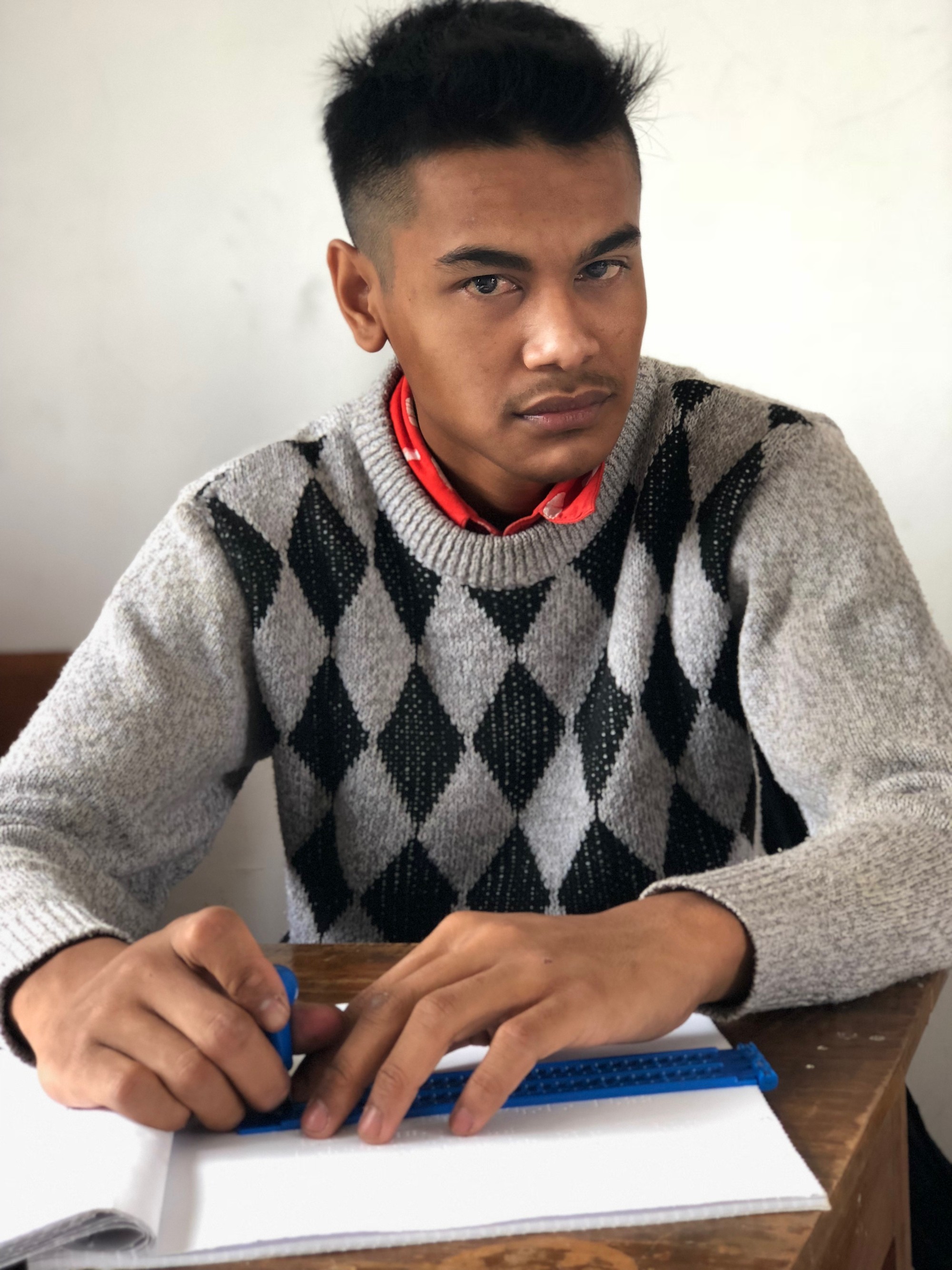
Puput has accepted pending blindness with humility. He is soft-spoken and less expressive than many of his peers. He has a sense of gravitas about him, as if he knows he’ll overcome this setback but just hasn’t figured out how he will do it yet. His countenance is generally stern, but he often breaks into a smile at the jests of his best friend and classmate, Joko.
Joko Supriyanto endlessly makes jokes and offers support to everyone around him, which makes him a perfect friend for Puput. The best friends sit next to each other all day and usually walk home together after school as well.
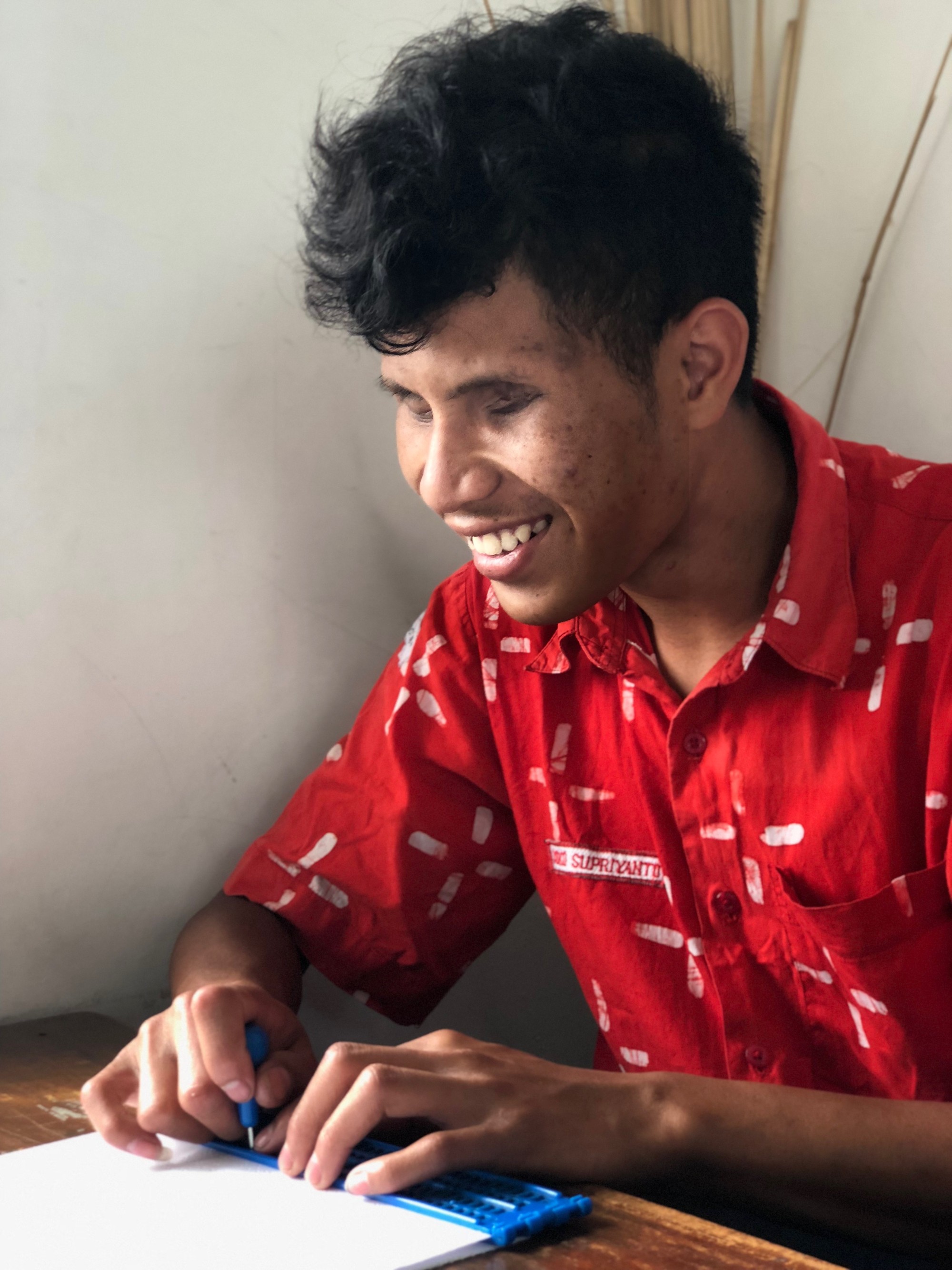
Joko has been blind for as long as he can remember due to a botched surgery that aimed to cure him of an eye infection when he was one or two years old.
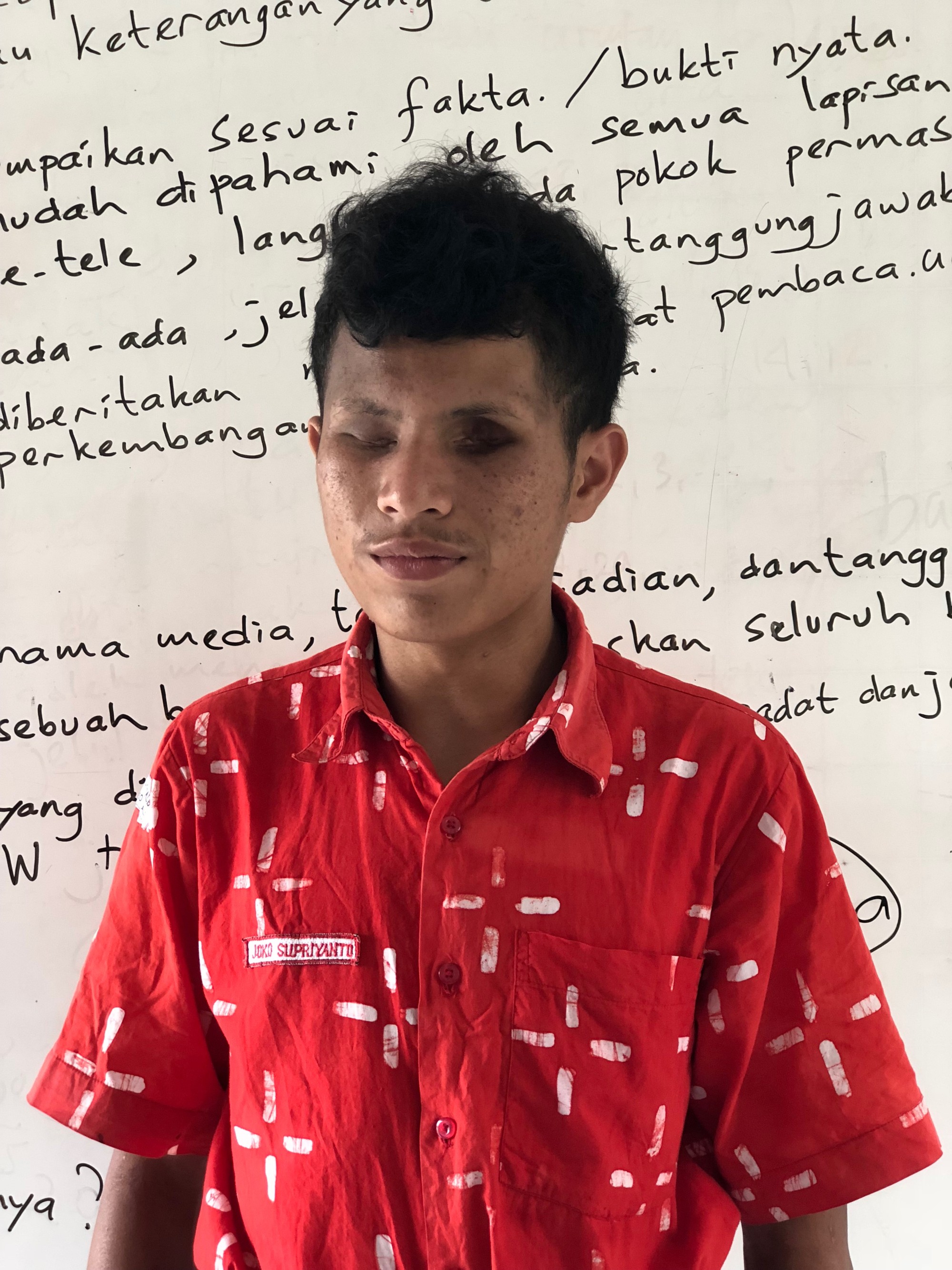
In the 16 years that have passed since, Joko has become a fluent reader and writer of braille, capable of walking to and from school without assistance, and has even recently started raising birds, rabbits and chickens. He is also a bit of a legend around these parts because he once had a “normal” girlfriend. I was surprised to receive a Facebook friend invitation from him after my second visit and learn that he can send text messages.
Joko and his peers at the school owe much of their success to those who established the Educational Foundation for Extraordinary Children 28 years ago and the teachers who joined the mission since, who provide them with skills training and life lessons.
Indonesia’s “sekolah luar biasa” are both out of the ordinary, and truly extraordinary. Unfortunately, the national curriculum does not account for the special needs of those who learn in them, and national testing doesn’t capture the dedication, expertise, patience, and flexibility of those who teach and learn in these extraordinary schools.
The best schools, “extraordinary” or otherwise, aren’t known for their graduation rates or job placement figures, but because they serve as cultural hubs and spaces of exploration. But perhaps the most extraordinary schools are those in which we learn to unite in difference, which first requires us to see and accept it.
Even in parting, Purnomo and his students looked forward to reuniting. They bid me farewell with a song, asking, “Kapan kapan kita bertemu lagi? (“When, oh when will we meet again?”)

